-
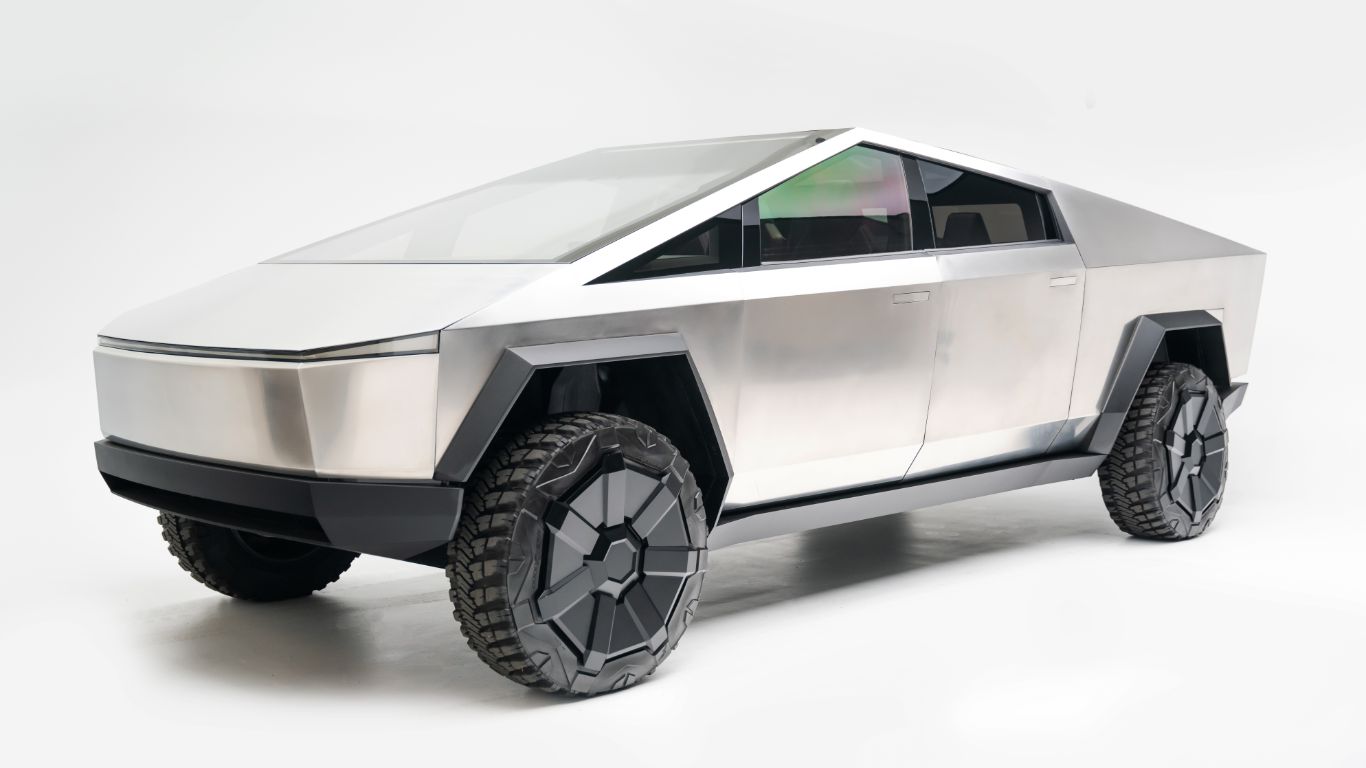
Spark of genius
© Petersen MuseumA new exhibition at the world famous Petersen Automotive Museum tells the story of Tesla. Called ‘Inside Tesla: Supercharging an Electric Revolution’, the display gathers together ‘the most comprehensive collection of Tesla products to date’ – including rarely seen prototypes and concept cars.
One such prototype is the Cybertruck that company founder Elon Musk used to demonstrate Tesla’s ‘unbreakable’ glass (which subsequently broke). It’s a reminder that not everything in the Tesla story has gone according to plan.
-
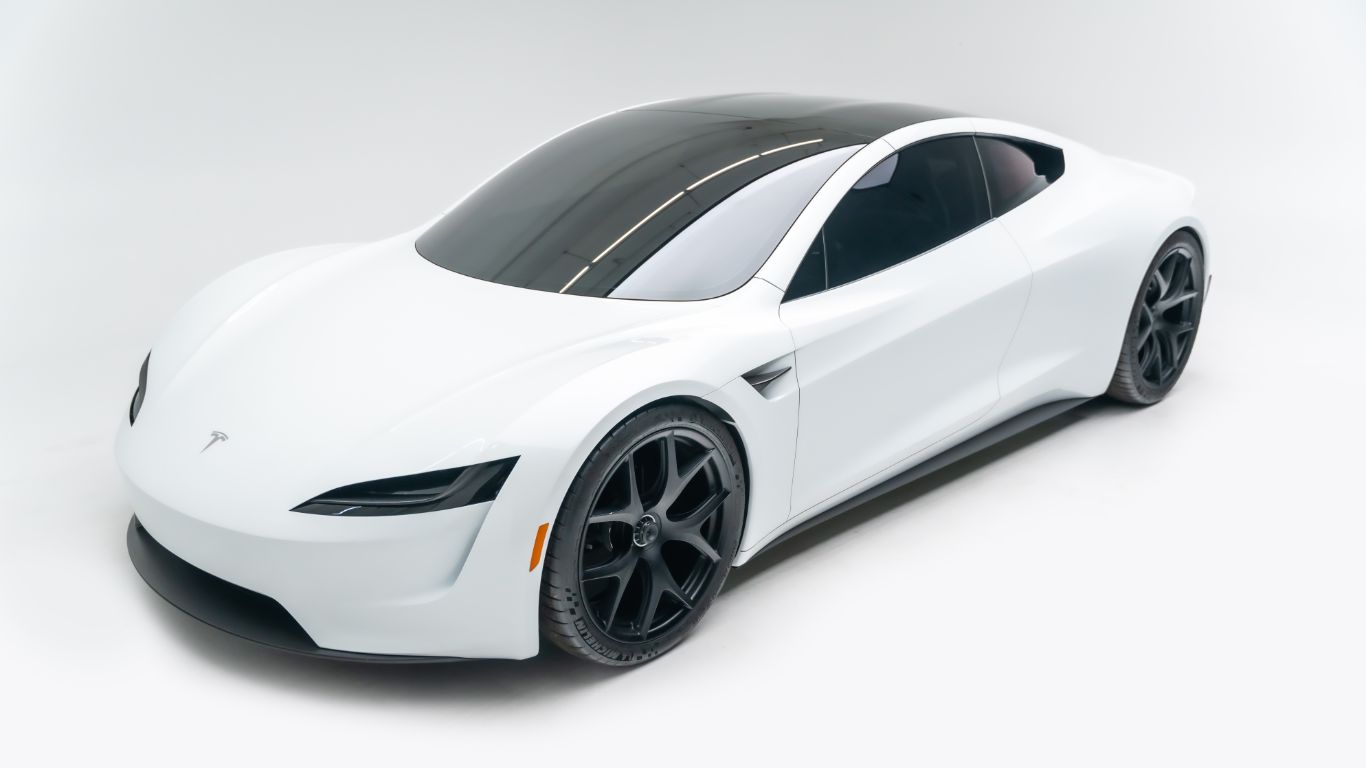
Tesla Roadster
© Petersen Automotive MuseumAnother forthcoming car on display in Los Angeles is the Tesla Roadster, first revealed as a concept in 2017 and apparently due for production in 2023. Its 200kWh battery is claimed to provide 620 miles of range, along with 0-60mph in 1.9 seconds and a top speed of 250mph. As with the Cybertruck, we’ll believe it when we see it
So, how did Tesla Motors go from a start-up to the world’s most valuable car company in less than 20 years? Join us as we chart the company’s remarkable rise.
-
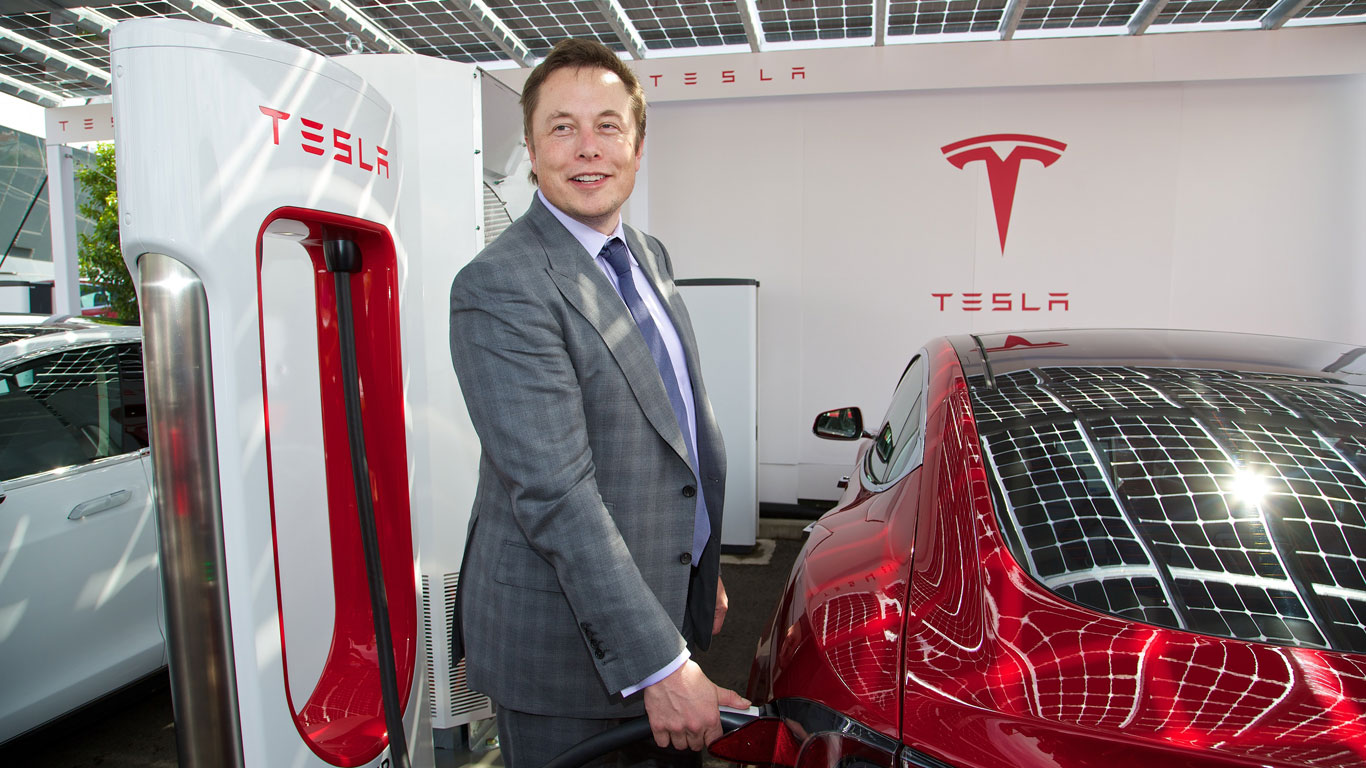
Nice to tweet you
© TeslaOf course, Elon Musk has other things on his plate, having splashed out $44 billion to buy Twitter. The American entrepreneur promises to unlock the “tremendous potential” of the social network – tne controversial transformation is underway as we speak… let’s for now leave him to that and concentrate on Tesla instead!
-
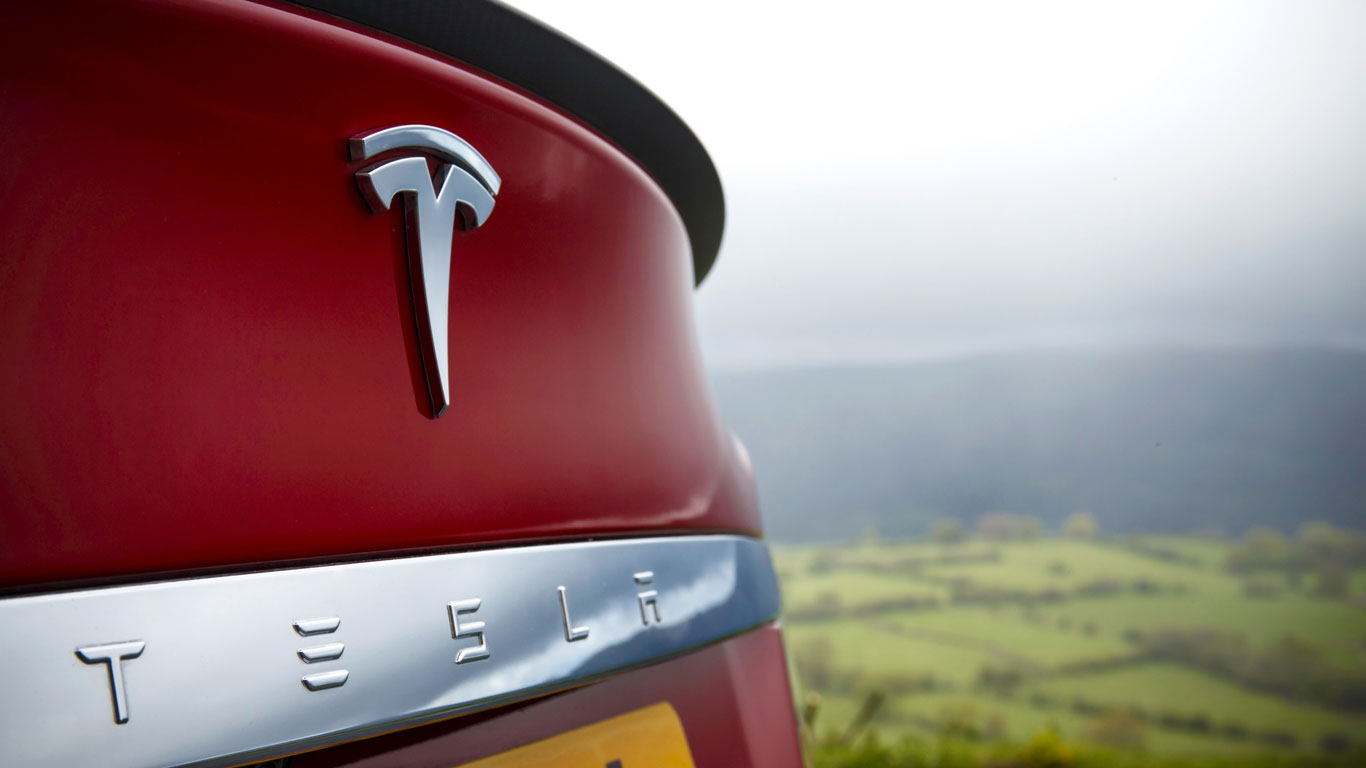
No compromise
© TeslaTesla Motors was founded in 2003 ‘by a group of engineers who wanted to prove that people didn’t need to compromise to drive electric – that electric vehicles can be better, quicker and more fun to drive than gasoline cars’. Its founders were Martin Eberhard, Marc Tarpenning, Ian Wright, J.B. Straubel and a certain Elon Musk.
-
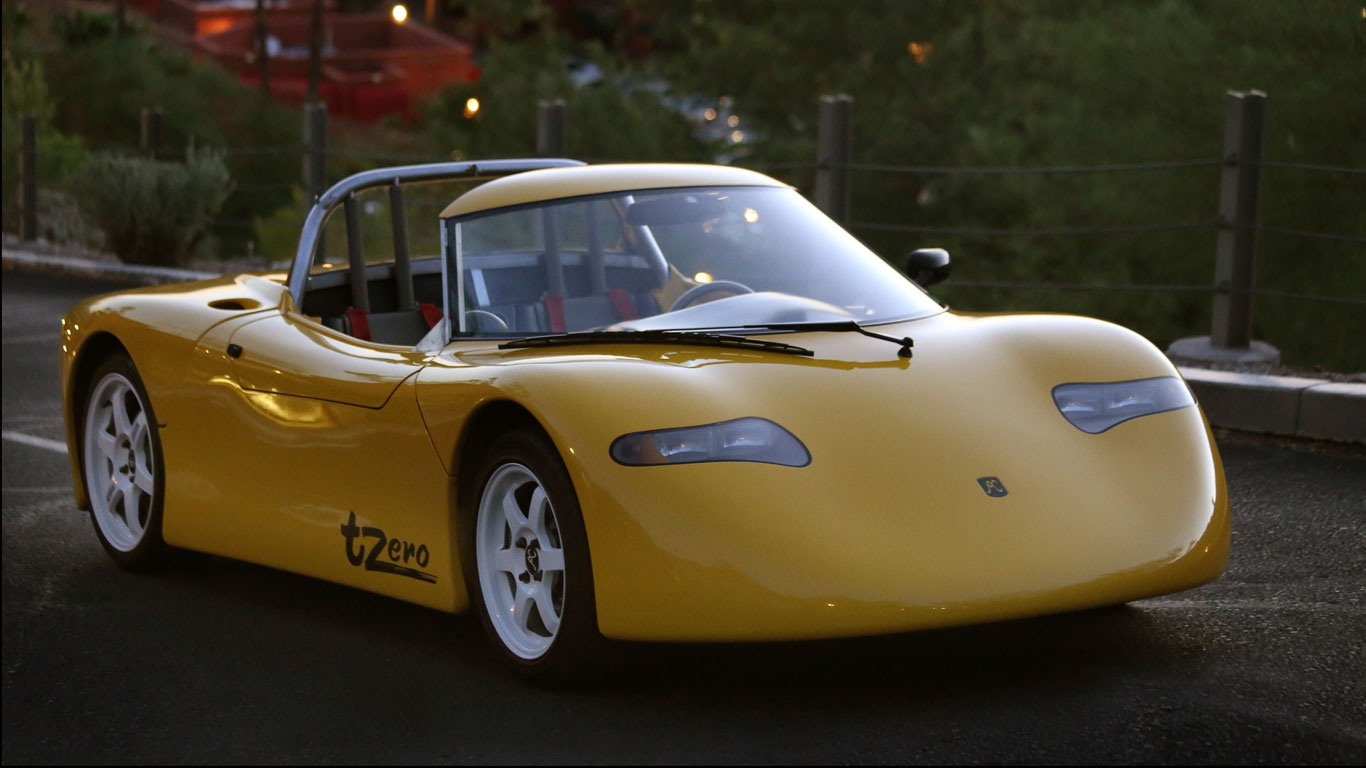
The Tzero
© Pete Gruber – WikipediaAccording to a piece on Business Insider, the story began when product designer Malcolm Smith took a call from Martin Eberhard. He was invited to an office in California where he found Eberhard and his partner Marc Tarpenning working on an electric car using a Piontek Sportech kit car as a base. The car was called the Tzero, and the pair harboured dreams of building an electric car to sell to the public.
-
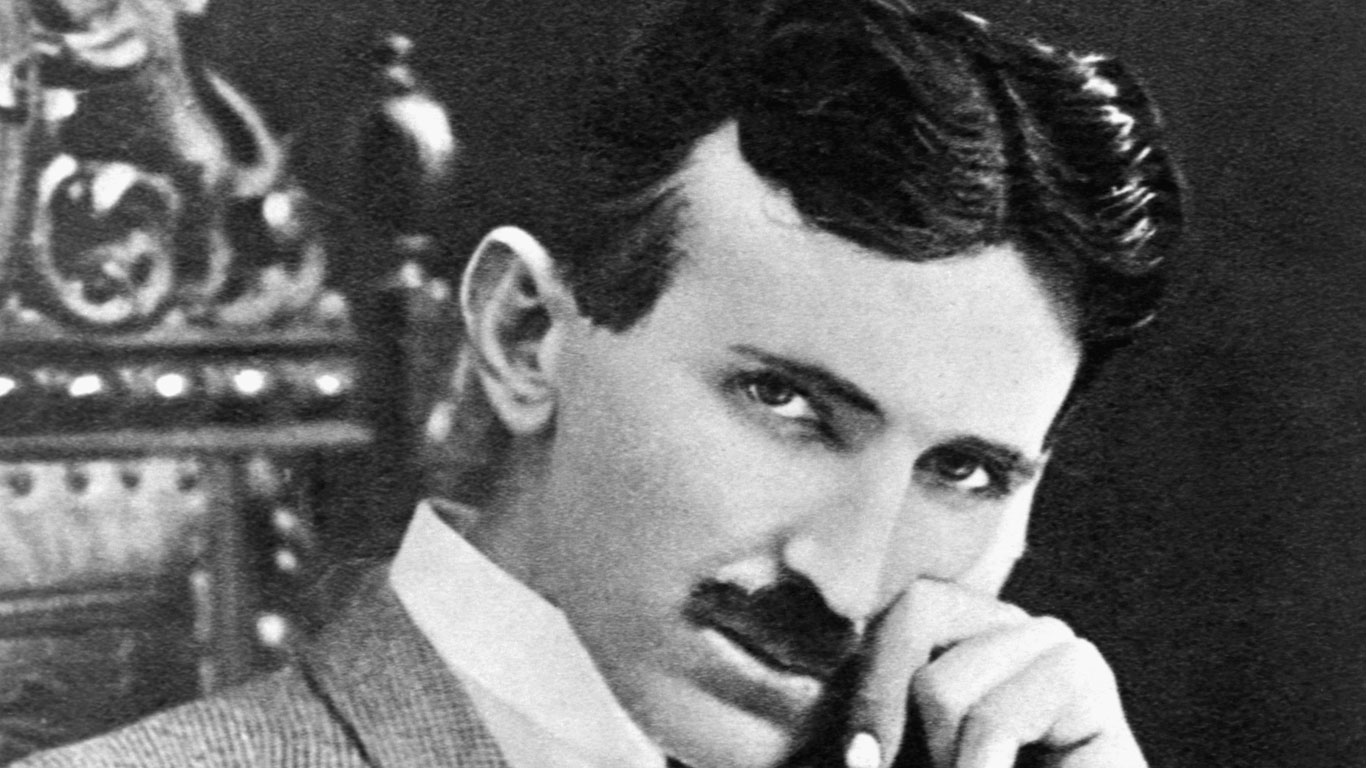
Incorporated July 2003
© WikipediaMarc Tarpenning purchased the teslamotors.com domain in April 2003, before the company was incorporated on 1 July 2003. The name pays tribute to Nikola Tesla, the Serbian-American inventor of the AC induction motor.
-
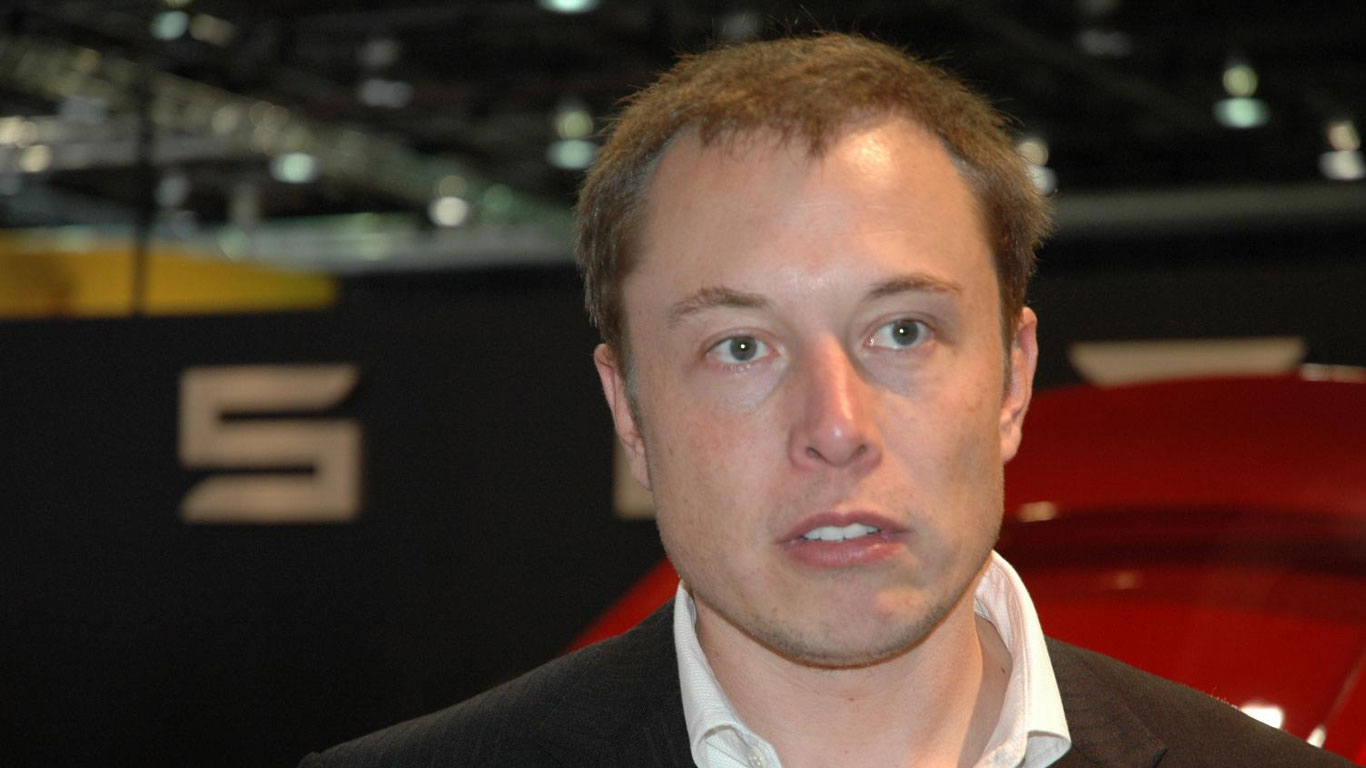
Musk ups his game
© NewspressMalcolm Smith was one of the first 20 employees of the new car company, with an official title of vice president of vehicle engineering. The next step was to secure funding, as building and sustaining a volume car manufacturer wouldn’t be cheap. Cutting a long story short, Musk invested $7.5 million in the business and became chairman of the board.
-
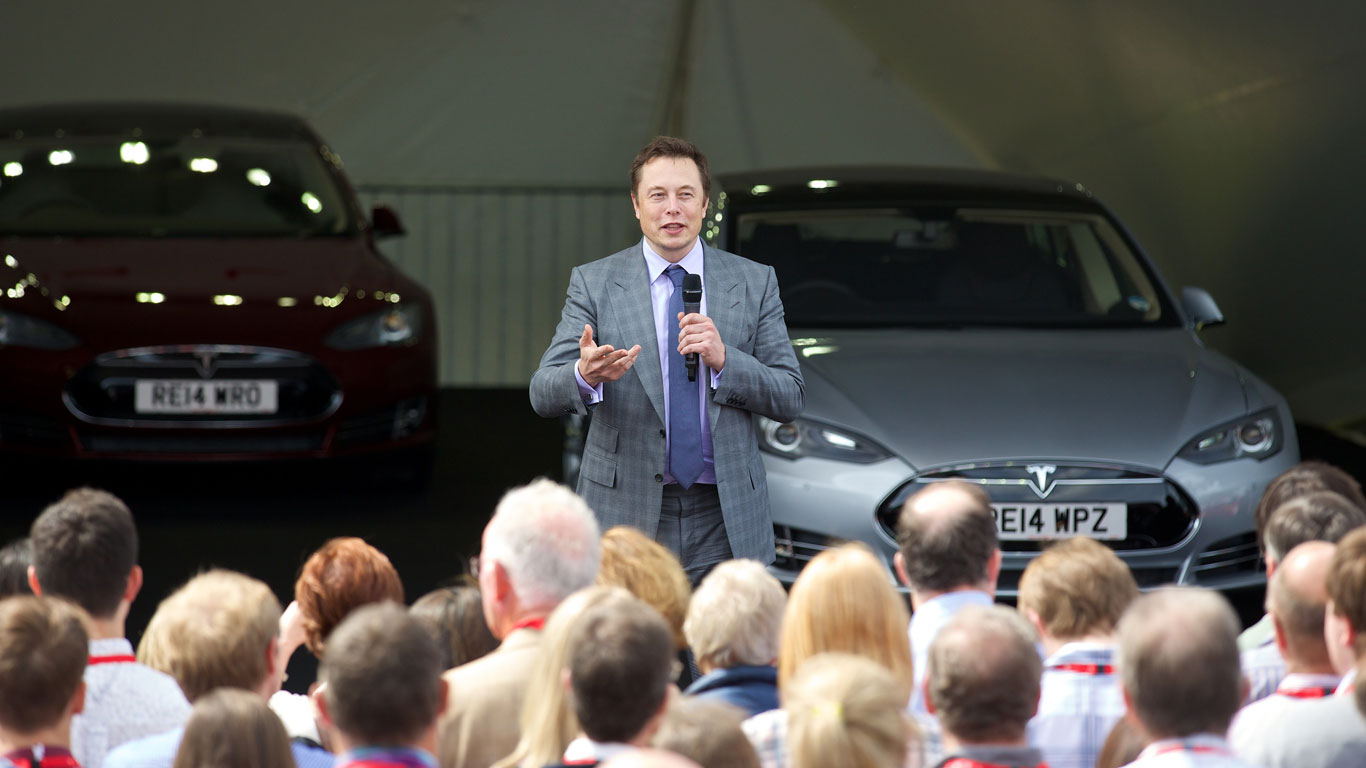
PayPal and space rockets
© TeslaElon Musk made his money when PayPal was sold to eBay for $1.5 billion in 2002. He also established SpaceX in the same year. Interviewed for a National Geographic documentary, Musk spoke about his plans for the future of the world. These plans, which he made at college, centred on the internet, making life multiplanetary and sustainable energy.
-
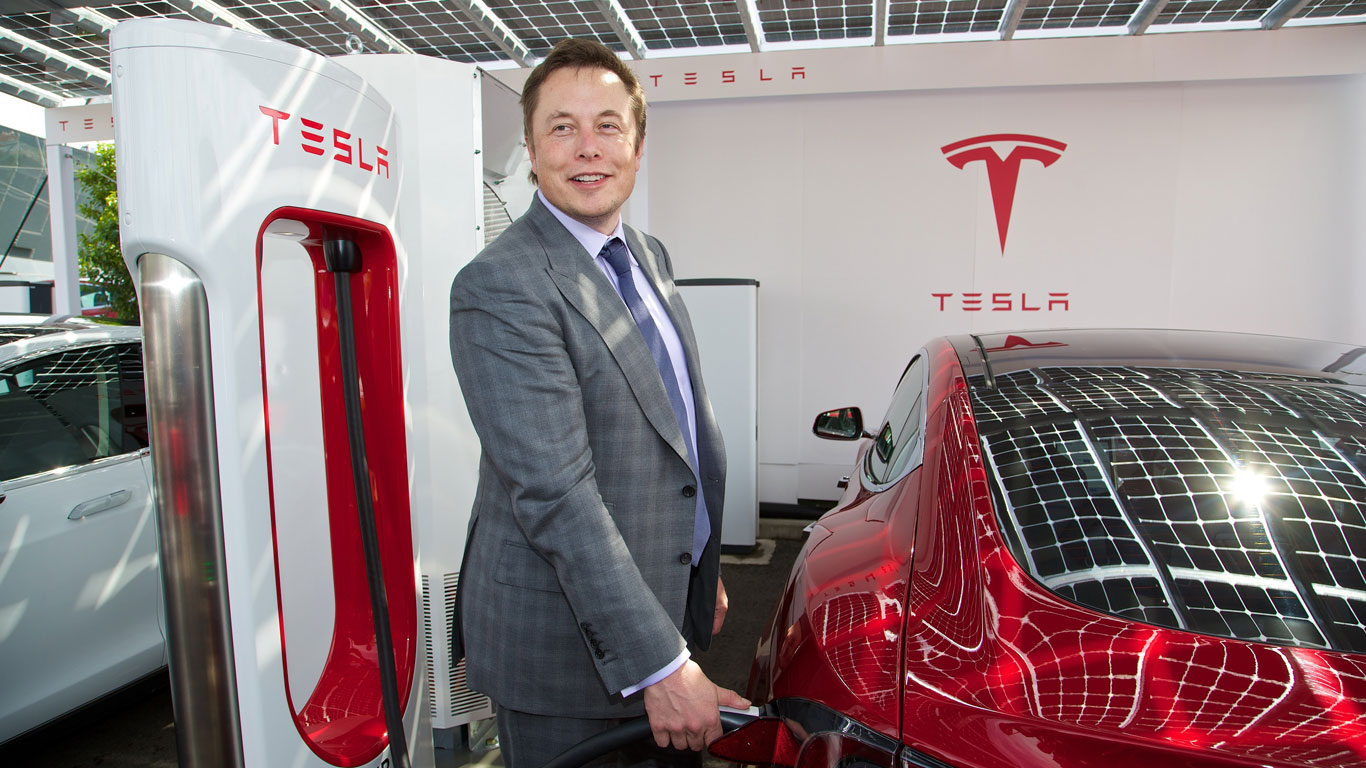
Under pressure
© TeslaWith so much at stake, it’s understandable that things got a little heated. Musk fell out with Eberhard, who resigned from his executive position and became president of technology, with Michael Marks taking over as interim CEO in 2007. Later in the year, he was replaced by Ze’ev Drori, the former CEO of Clifford Electronics, before Musk took on the role of CEO in 2008.
-
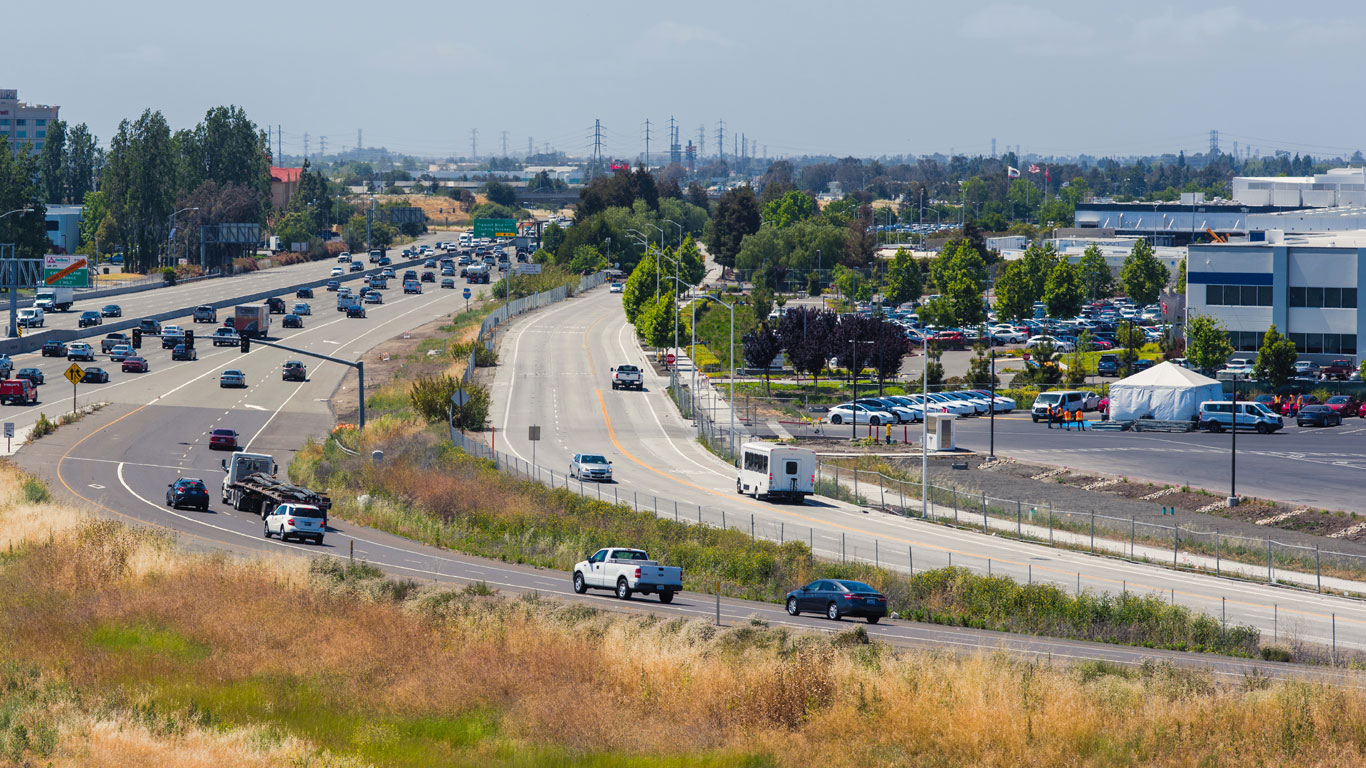
Job cuts
© ShutterstockTesla Motors wasn’t in the best of shape. By the time Musk became CEO in October 2008, he had already invested $55 million of his own cash and was forced to fire 25 percent of the workforce. The fact that he managed to secure $40 million of funding saved the company from bankruptcy.
-
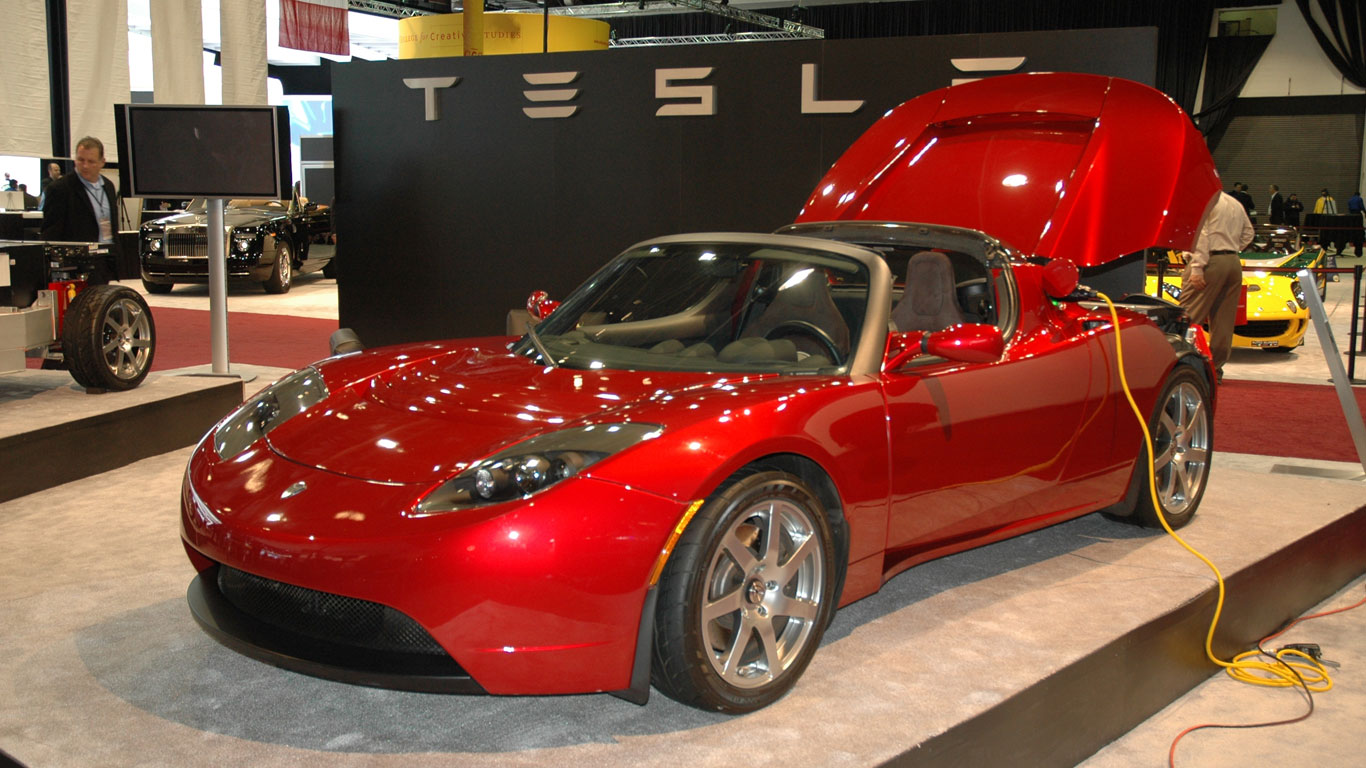
Tesla Roadster
© NewspressThe story of the Tesla Roadster begins in 2003, when Eberhard and Tarpenning muscled in on the Lotus stand at the Los Angeles Auto Show. Tesla knew that it had to piggyback an existing platform to get established – the cost of building an entire car would be too prohibitive. Lotus seemed like a good fit, with its own engineering and design divisions, not to mention a track record of working with other companies. At the time, Lotus was building the VX220/Speedster for General Motors.
-
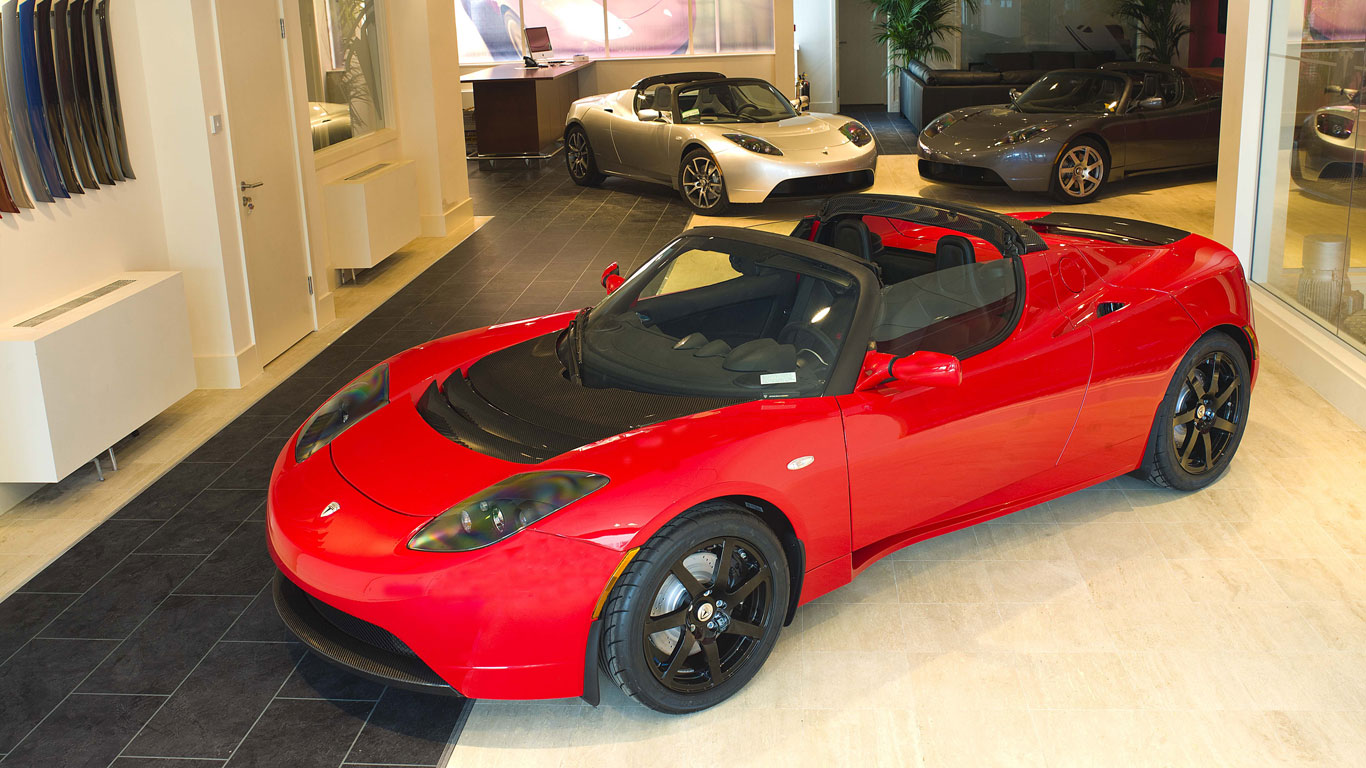
Tesla Roadster
© TeslaTesla struggled to agree on a design for the Roadster. The team didn’t want something that screamed ‘electric’ like the GM EV1, but it was the British designer Bill Moggridge who sent the team down a path of building something that looked like a traditional sports car, with a hint of retro about it. Following another call for designs, one proposal stood out: that of Barney Hatt, the principal designer at the Lotus Design Studio.
-
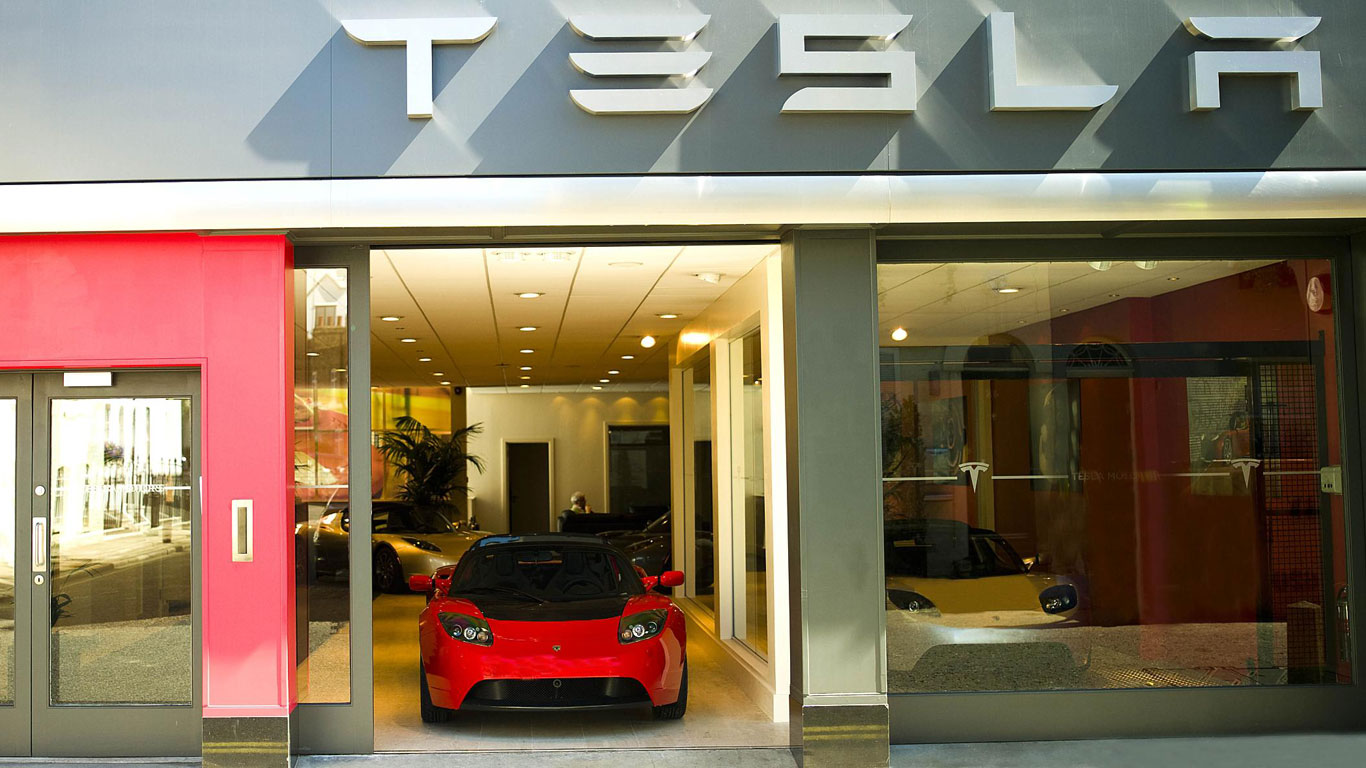
Tesla Roadster
© TeslaMartin Eberhard emptied a room at his house and invited friends and colleagues to vote on the different proposals. Each person was given red and green sticky-notes, with red for ‘bad’ and green for ‘good’. Writing in 2006, Eberhard said: “No doubt about it. Barney had a few red notes to be sure, but he was hands-down the winner. I never expected it, because his first proposals (before Bill’s brief) were awful”.
-
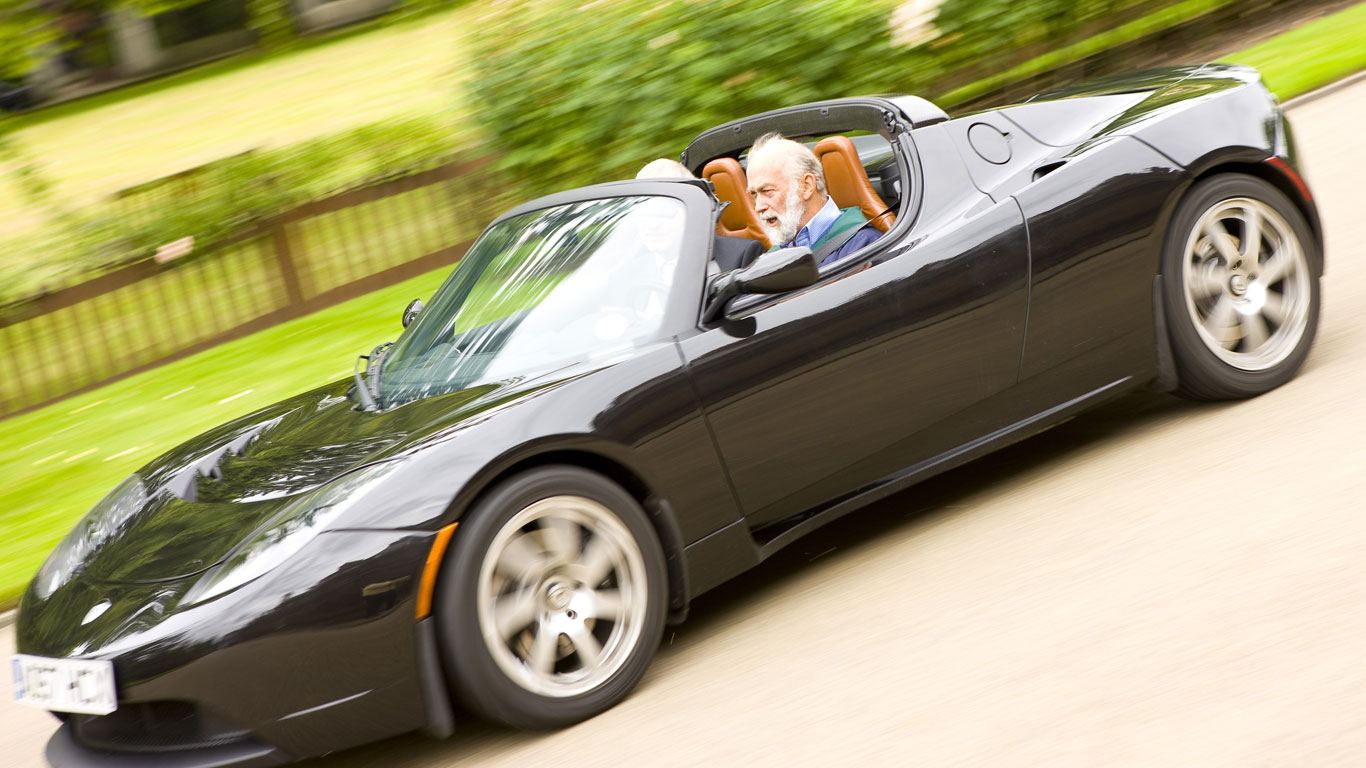
Tesla Roadster
© TeslaThe first design mule was completed in 2004, before the Tesla Roadster was unveiled in 2006 at the Barker Hangar in Santa Monica. Tesla hoped to sell 100 cars at the event, with guests invited to spend $100,000 on the electric dream. Two weeks later, Tesla had received 127 reservations. The plan was to start shipping in 2006, building 500 cars a year by 2007, before making a profit by 2008. In reality, the Tesla Roadster didn’t start shipping until February 2008, with regular production commencing a month later.
-
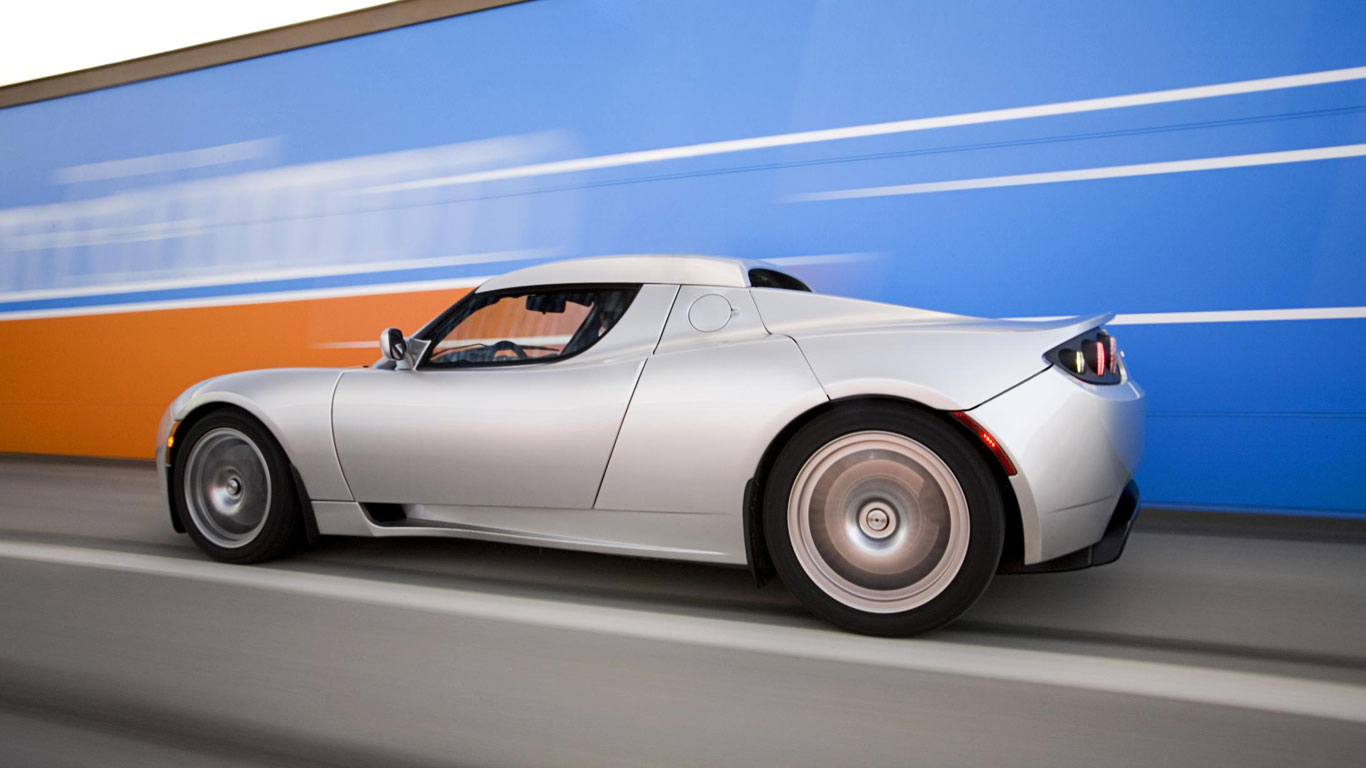
Tesla Roadster
© MotorexpoAt the time, Tesla claimed that the Roadster could deliver a range of up to 245 miles, although this was revised to 211 miles. It could also hit 60mph in just 3.7 seconds, giving it supercar levels of performance. Not that Top Gear, and in particular, Jeremy Clarkson, was about to give the Roadster an easy ride.
-
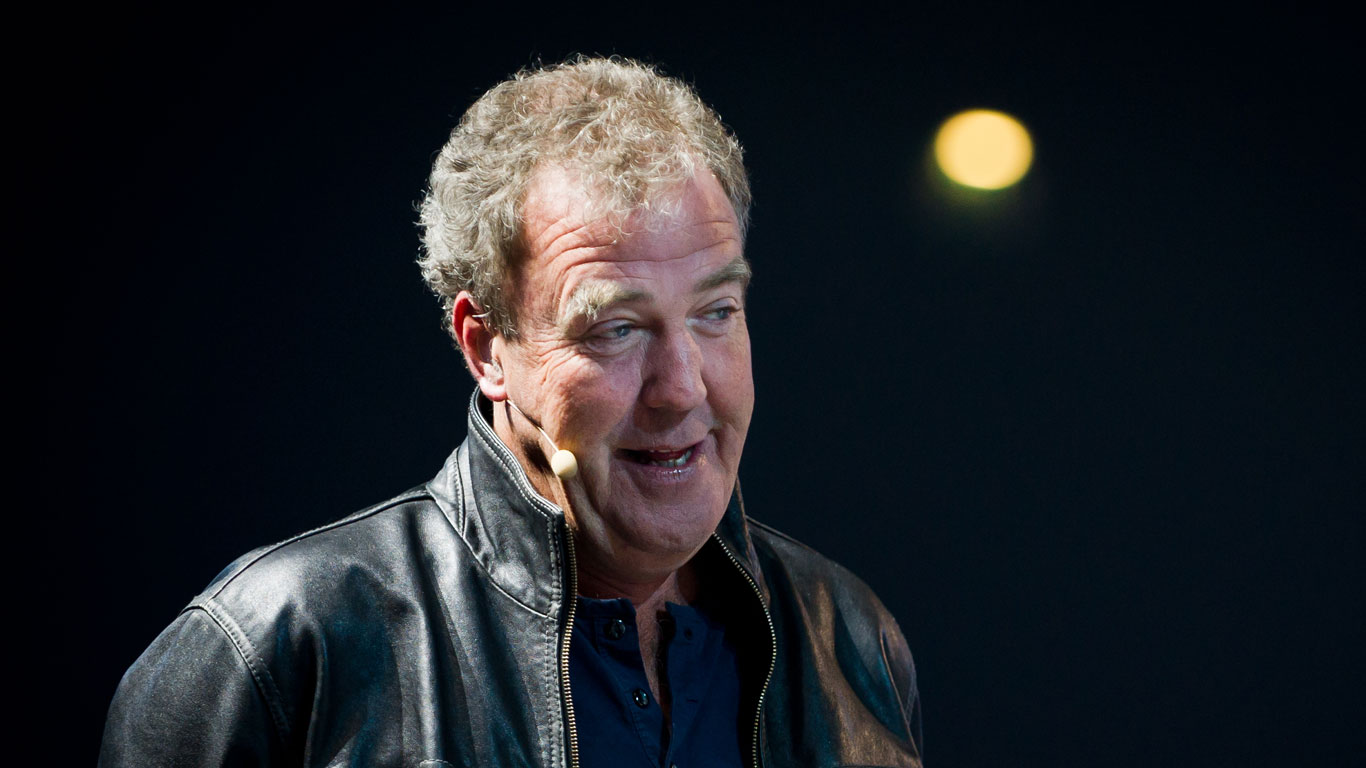
Tesla vs. Top Gear
© Top Gear LiveClarkson famously claimed that, when driven hard, the true range was just 55 miles, and television footage showed the car being pushed into a hangar by four men. We also watched as one Roadster overheated and the other one suffered from brake failure. Tesla sued the BBC for what it called ‘libel and malicious falsehood’, claiming ‘the breakdowns were staged and the statements [were] untrue’. Tesla lost the case.
-
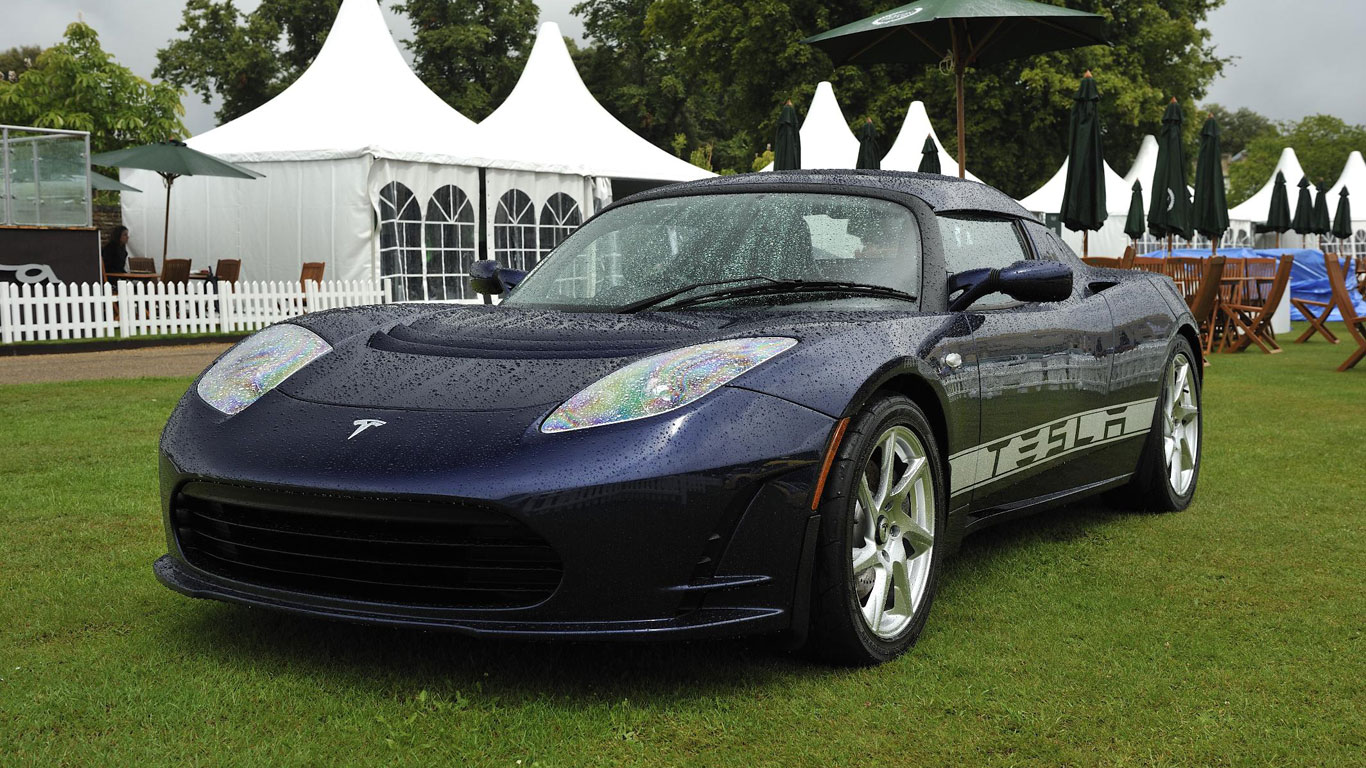
Tesla Roadster
© Salon PriveEarly troubles and a 2009 recall aside, the Roadster was successful in putting Tesla on the automotive map. But what was essentially a second car for wealthy individuals was only ever going to be a springboard for bigger things. Tesla knew that it needed a larger car with mass appeal. That car would be the Model S.
-
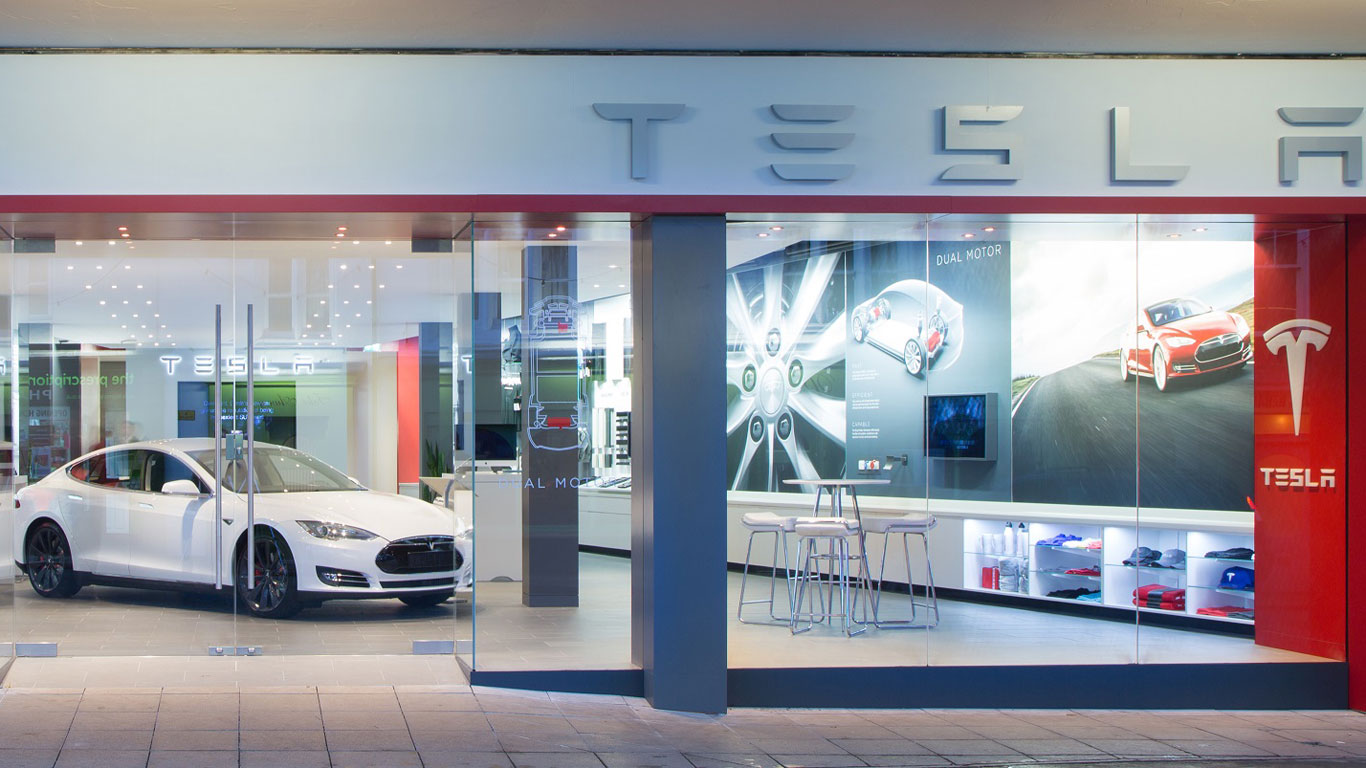
Growing pains
© TeslaThe year 2010 was to be a significant one in the history of Tesla. Elon Musk started by telling a judge that he was out of cash and living off emergency loans, while Tesla had lost a reported $290m in seven years. At the time, the company had sold just 1,063 cars and could boast a mere 12 showrooms around the world. However, the dream was far from over.
-
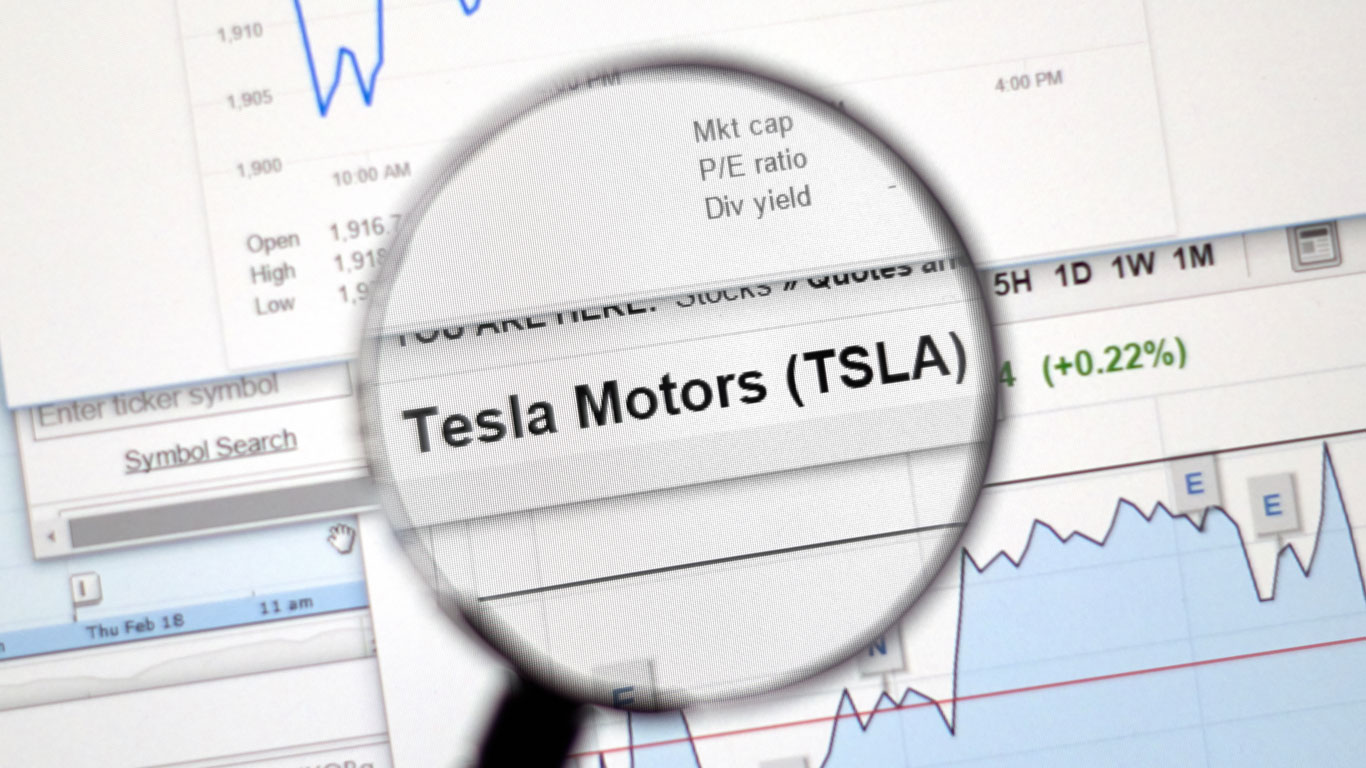
Tesla goes public
© ShutterstockIn April 2010, Daimler acquired a 10 percent equity stake in Tesla, with the American company receiving $50m in return. A few weeks later, the firm received a $465m loan from the US department of energy. Then, in June, Tesla made history by becoming the first American car company to go public since Ford in 1956. It sold 13.3m shares at $17 each.
-
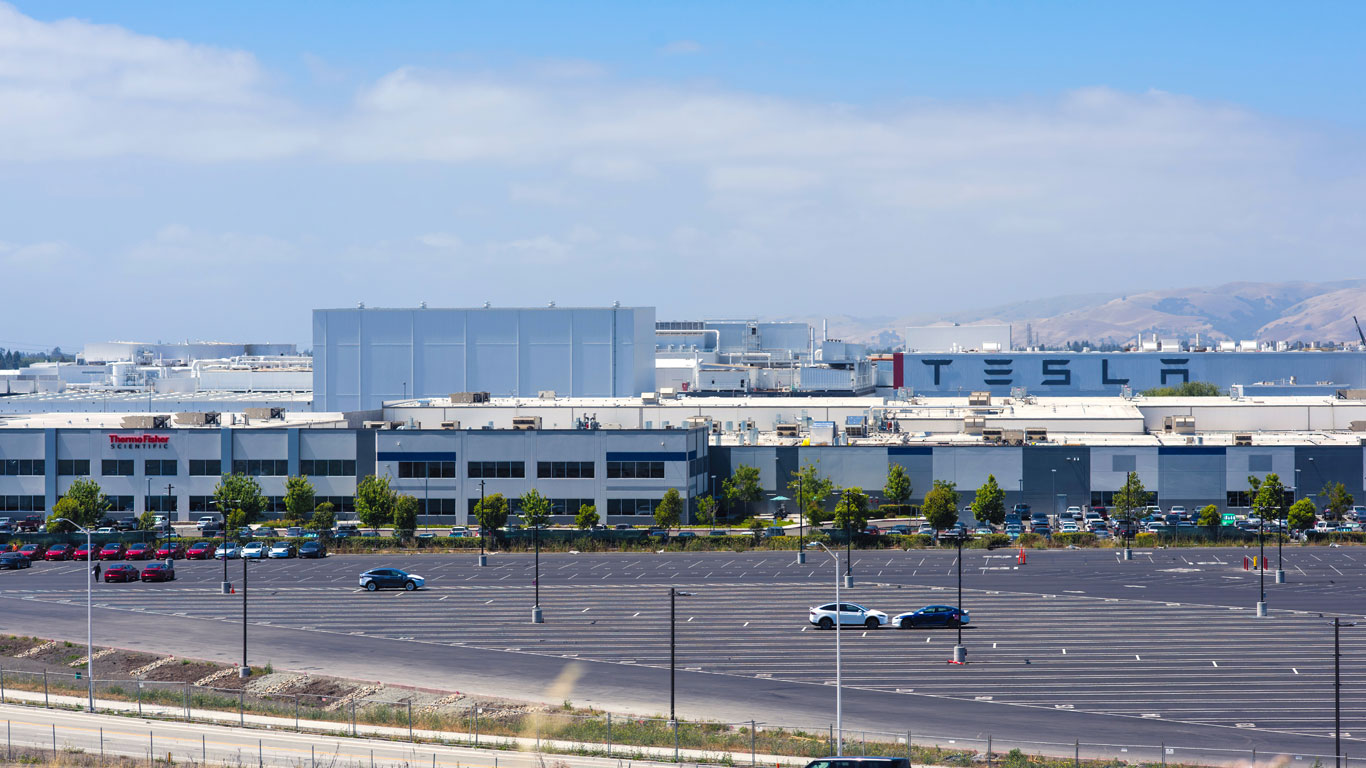
Tesla factory opens
© ShutterstockThe next significant step was the purchase of the former General Motors and Toyota factory in Fremont, California. Tesla added skylights to provide the workers with natural light and painted the floors white, giving it the feel of a tech plant, rather than a factory first used by GM in 1962. Employees were also given access to bikes to make their way around the 5.3 million square feet of manufacturing and office space, with machines painted red to make everything feel on-brand.
-
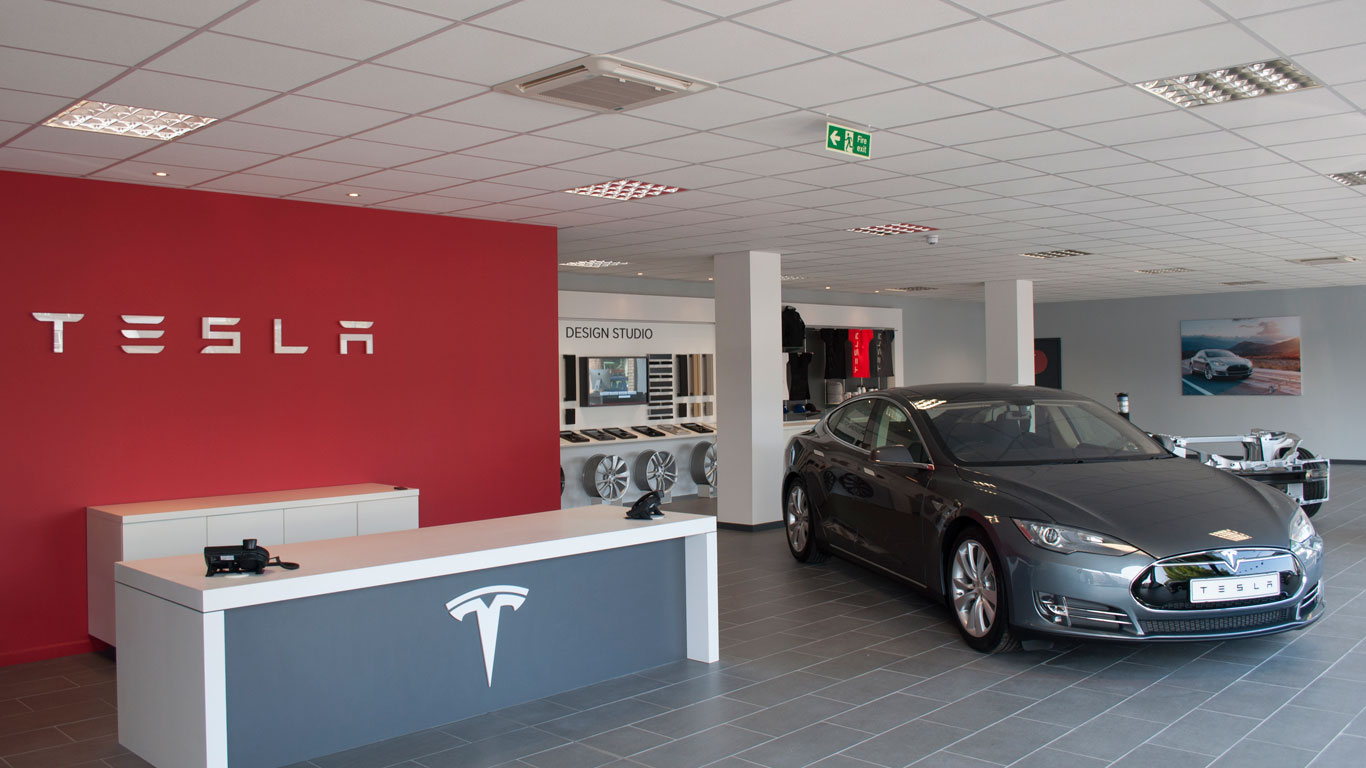
A new sales and marketing model
© TeslaEver the maverick, Elon Musk ripped up the automotive sales and marketing rulebook and adopted a strategy that was more tech-led. There are no dealers, with Tesla creating its own-branded stores. “The type of place we are striving for combines the feel of an Apple store with a Starbucks and a good restaurant,” said Musk. Meanwhile, Tesla decided against using an ad agency or paying for advertising.
-
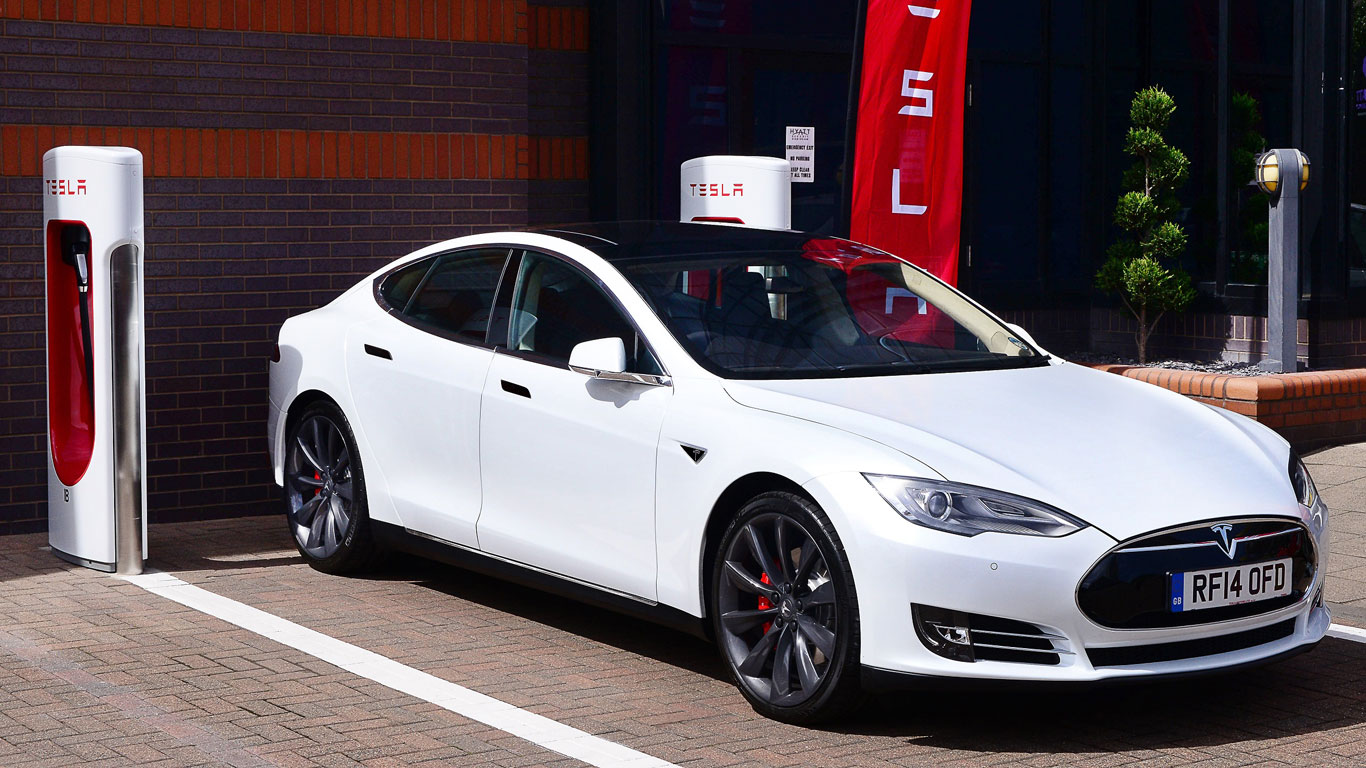
Tesla Model S
© TeslaMusk’s maverick approach to Tesla’s growth strategy was bold but effective, seeing him likened to Tony Stark of Iron Man fame. Invest in reputation first, then worry about profit later, he said in a documentary, with his showmanship helping to mask delays, product issues and financial woes on more than a few occasions. His decision to host a ‘ride and drive’ event to satisfy and pacify impatient Model S customers was a stroke of PR genius.
-
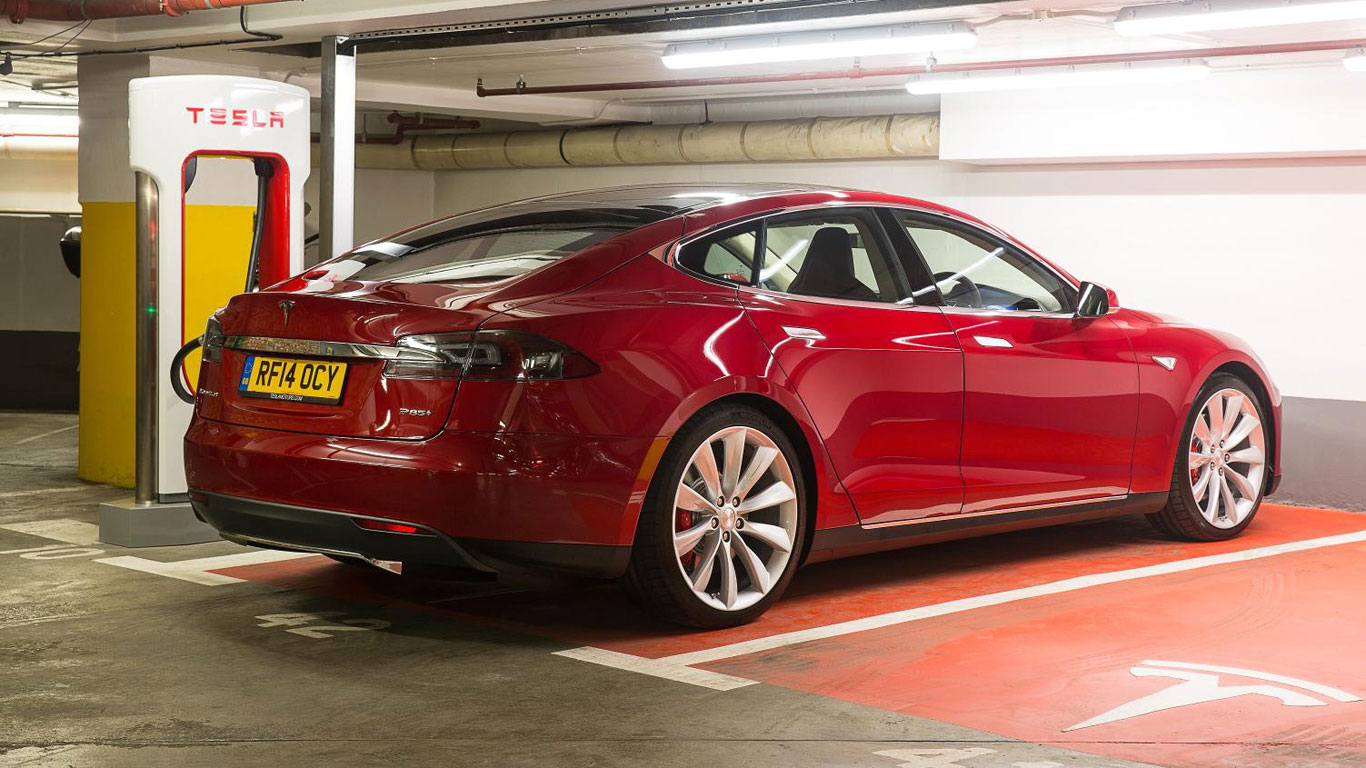
Tesla Model S
© TeslaTo achieve its aims, Tesla hired the former Toyota production engineering manager Gilbert Passin as vice president of manufacturing. Meanwhile, Tesla drafted in former Mazda North America design chief Franz von Holzhausen as its chief designer. “Tesla is changing the paradigm,” said Franz. “We’re going to turn the world on its ear and create high demand through design. There is a new hunger in the air for automotive design and looking to where automobiles are going in the future. Tesla will capture this through good design and engineering.”
-

Tesla Model S
© TeslaModel S deliveries began in June 2012 and the electric saloon started collecting awards within a few months. It also helped Tesla achieve its first quarterly profit in May 2013, before outselling the Mercedes-Benz S-Class, BMW 7 Series and every large luxury saloon in the US. A year later, Morgan Stanley labelled Tesla ‘the world’s most important car company’.
-
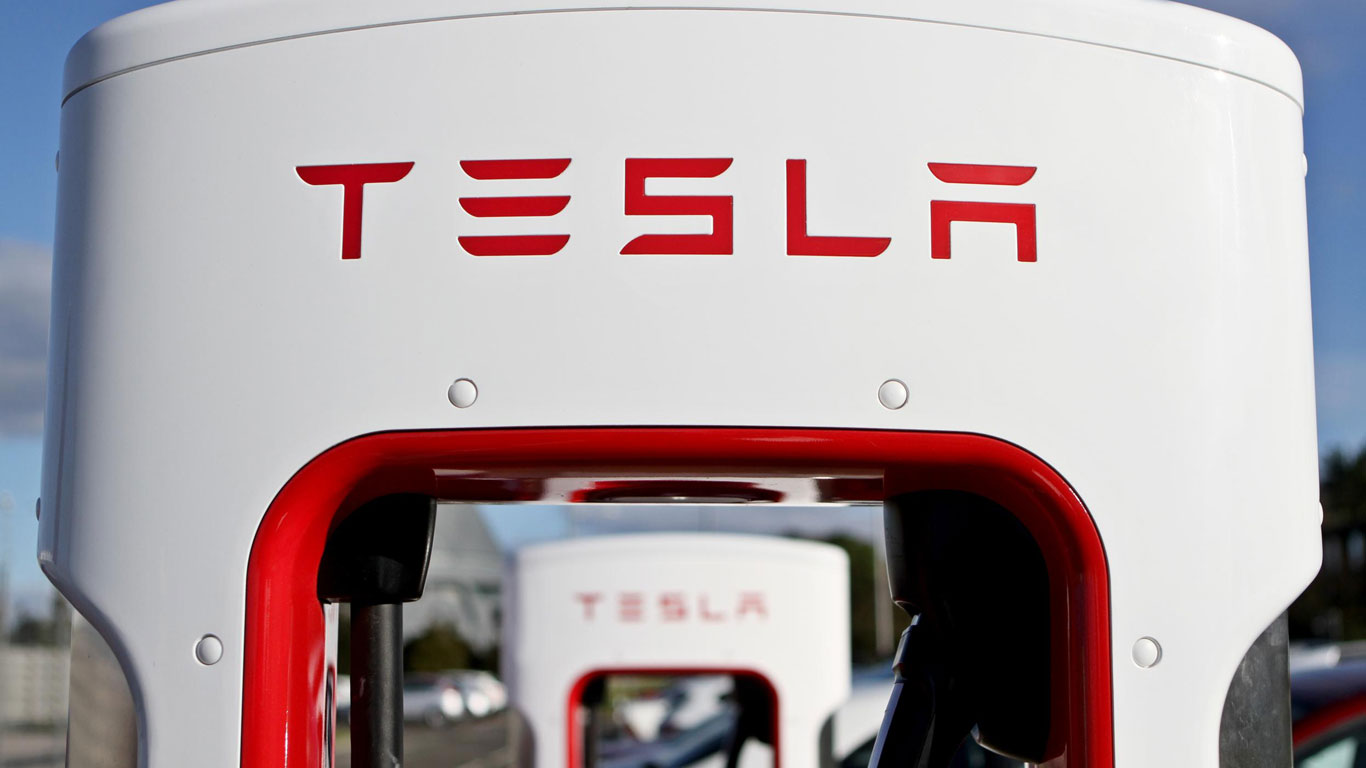
The first Supercharger
© TeslaTo satisfy demand, Tesla opened its first Supercharger in California in 2012, before embarking on an ambitious growth strategy. In June 2018, Tesla tweeted that it had opened its 10,000th Supercharger – located in Belleville, around 100 miles east of Toronto. A Supercharger can provide a Model S with around 170 miles of range in just 30 minutes.
-
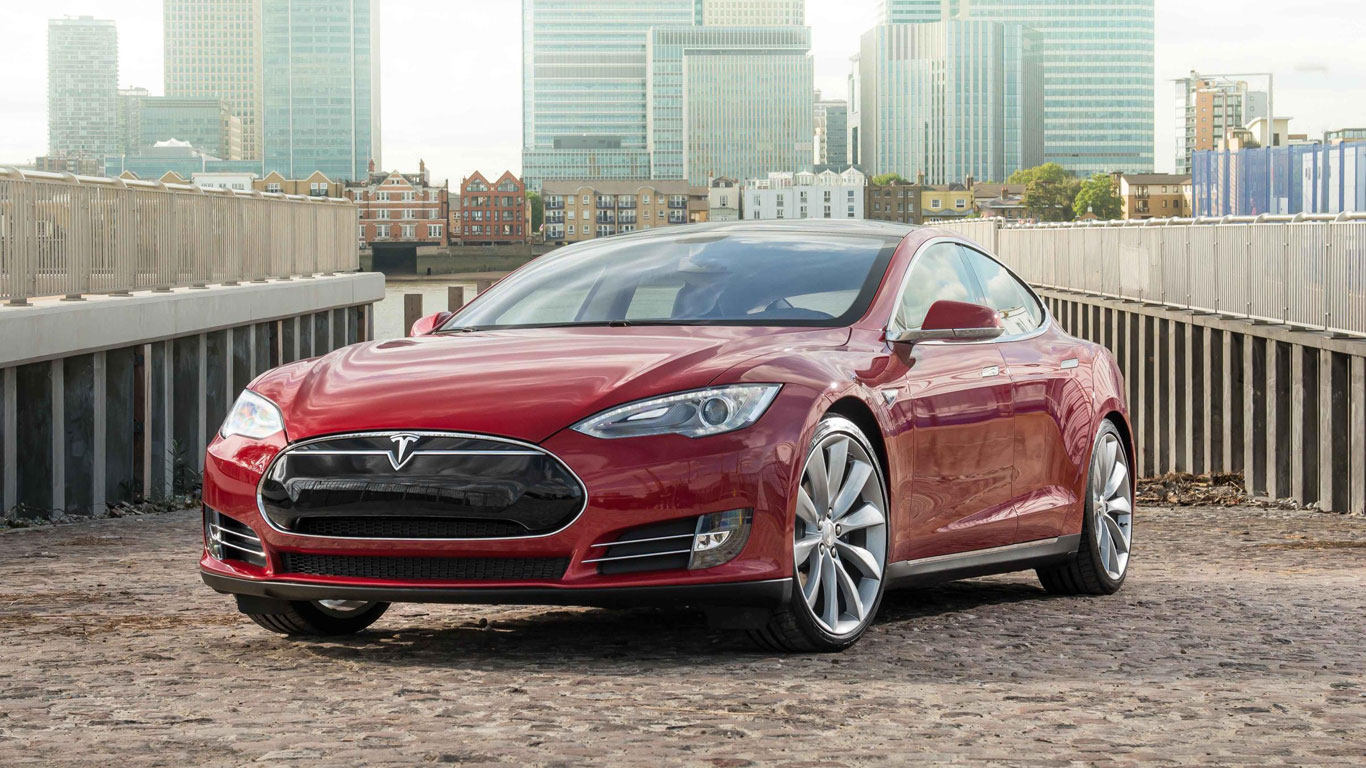
Fire fighting
© TeslaThe Model S soon became the poster star of the EV industry – a glamorous, tech-laden advertisement for the electric car. But it wasn’t smooth sailing for the world’s first all-electric luxury car. A series of fires in 2013 led to a drop in share value, with Tesla also reporting disappointing third quarter results. The first fire involved a sharp object puncturing the battery pack, with Musk defending the Model S, saying: “For consumers concerned about fire risk, there should be absolutely zero doubt that it is safer to power a car with a battery than a large tank of highly flammable liquid.”
-
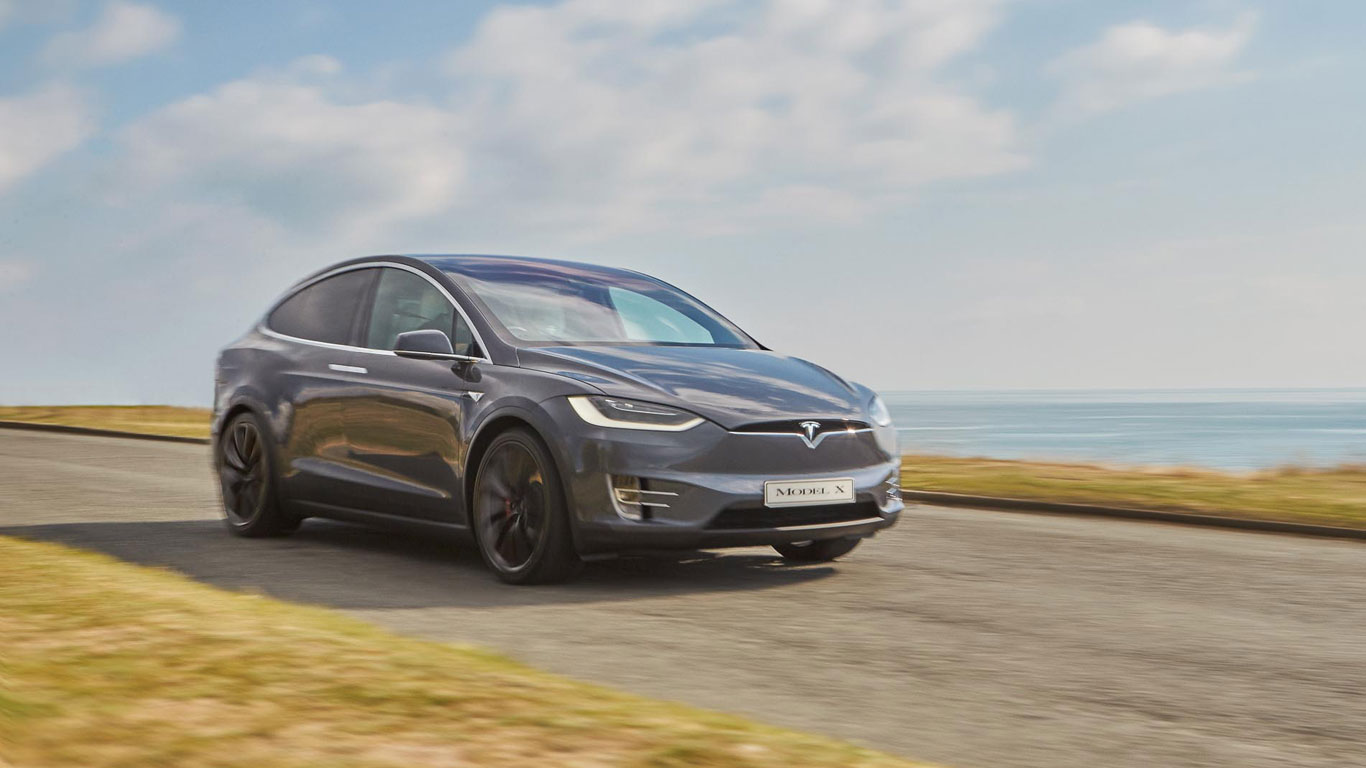
Tesla Model X
© TeslaTesla unveiled the Model X in 2012, with deliveries commencing in September 2015. Tesla calls it ‘the safest, quickest, most capable sport utility vehicle ever’, with the Model X boasting seven seats, all-wheel drive, a five-star safety rating and a range of up to 295 miles. In December 2015, Tesla announced that it had sold the 100,000th Model S, making it the second best-selling electric car behind the Nissan Leaf.
-
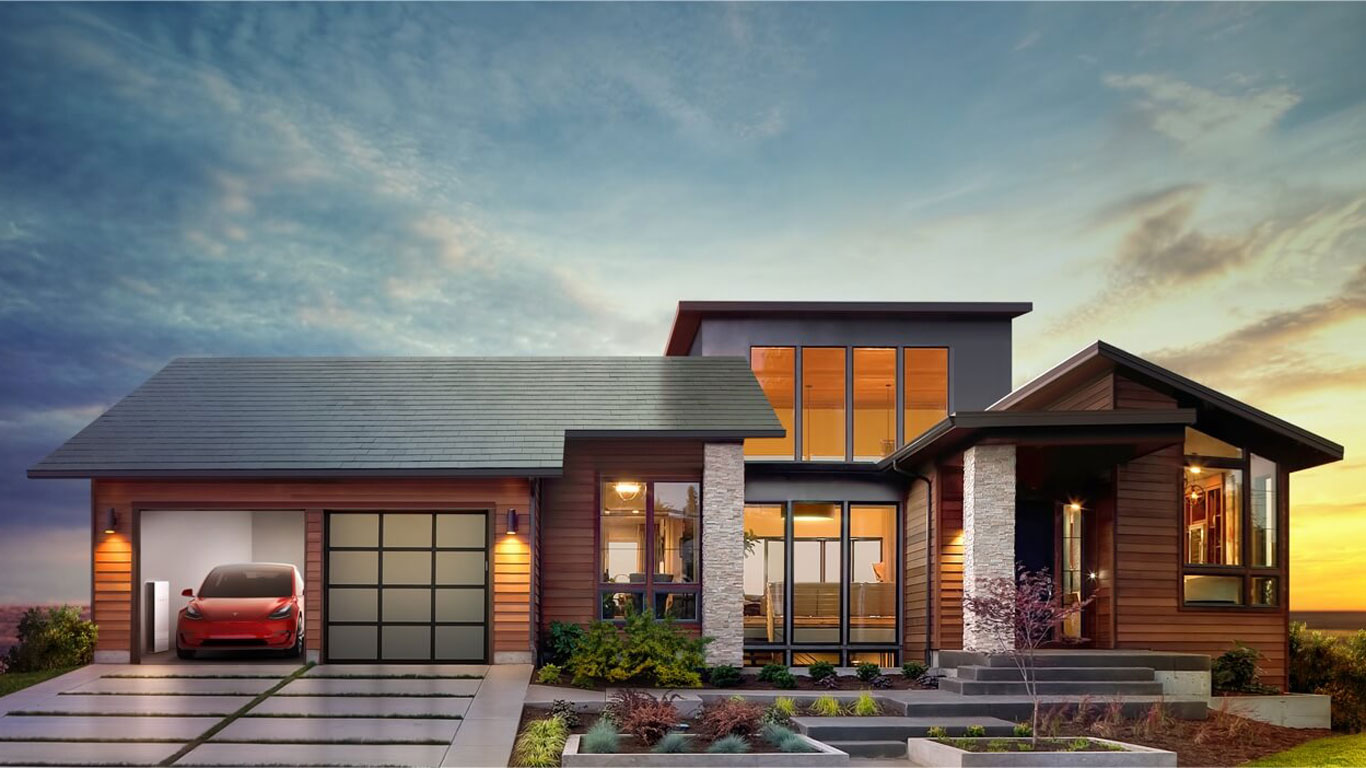
Tesla Energy
© TeslaIn 2015, Tesla Motors unveiled Tesla Energy, with a promise to deliver storage systems or batteries for homes, business and utility companies. It’s part of a vision to create a fossil fuel-free lifestyle in which people generate their own electricity to power their homes and recharge their car batteries. A year later, Tesla announced plans to buy SolarCity to ‘create the world’s only integrated sustainable energy company, from energy generation to storage to transportation’.
-
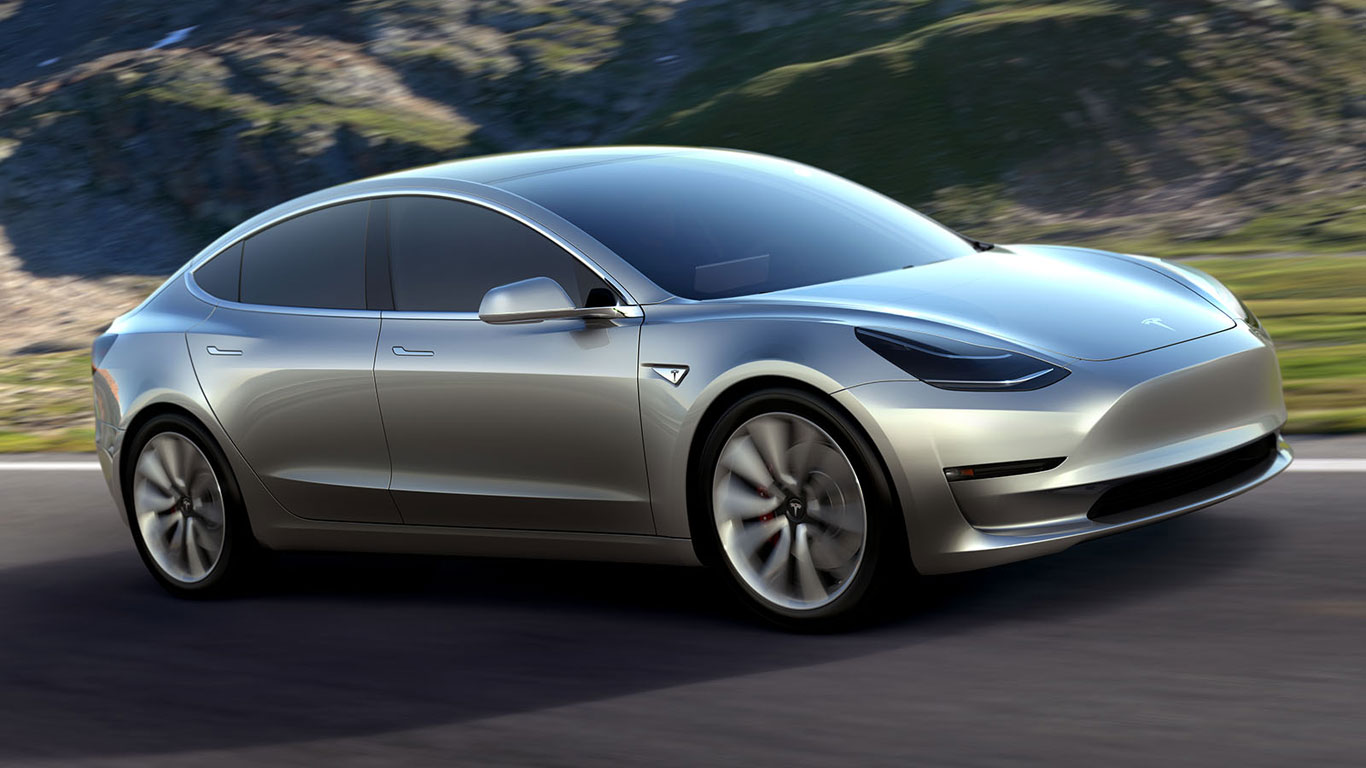
Tesla Model 3
© TeslaThe Tesla Model 3 was unveiled in 2016, with Musk saying the firm had received 276,000 pre-orders for its affordable electric car. Customers were asked to put down $1,000 deposits to reserve their vehicle with Musk aiming to produce around 500,000 units a year once production reached full capacity. In October, Tesla announced its second and only other quarterly profit.
-
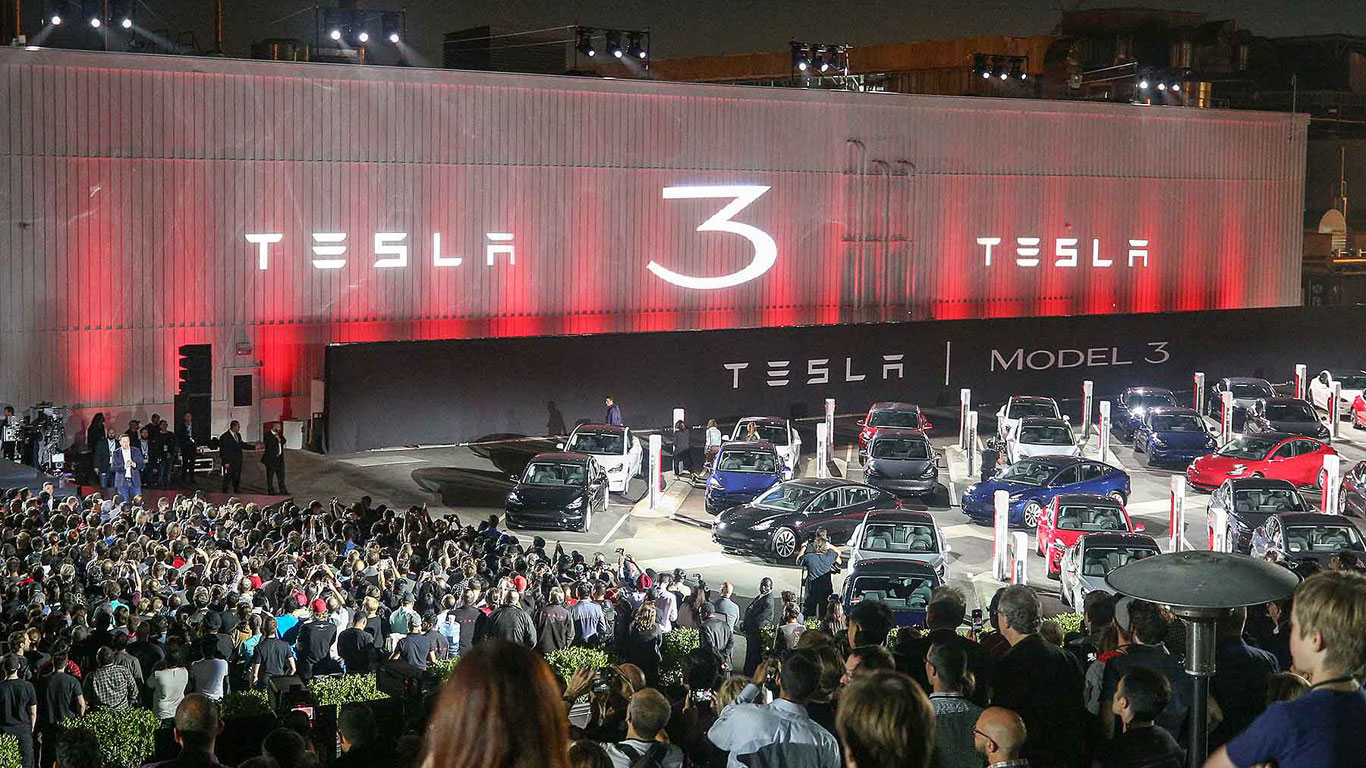
Tesla Model 3
© TeslaThe first 30 Model 3s were delivered to their owners at an event in Fremont in July 2017, although by the end of the year the firm admitted that delivery numbers were falling well short of expectations. Shares fell as Tesla said: ‘As we continue to focus on quality and efficiency rather than simply pushing for the highest possible volume in the shortest period of time, we expect to have a slightly more gradual ramp through Q1, likely ending the quarter at a weekly rate of about 2,500 Model 3 vehicles. We intend to achieve the 5,000 per week milestone by the end of Q2’.
-
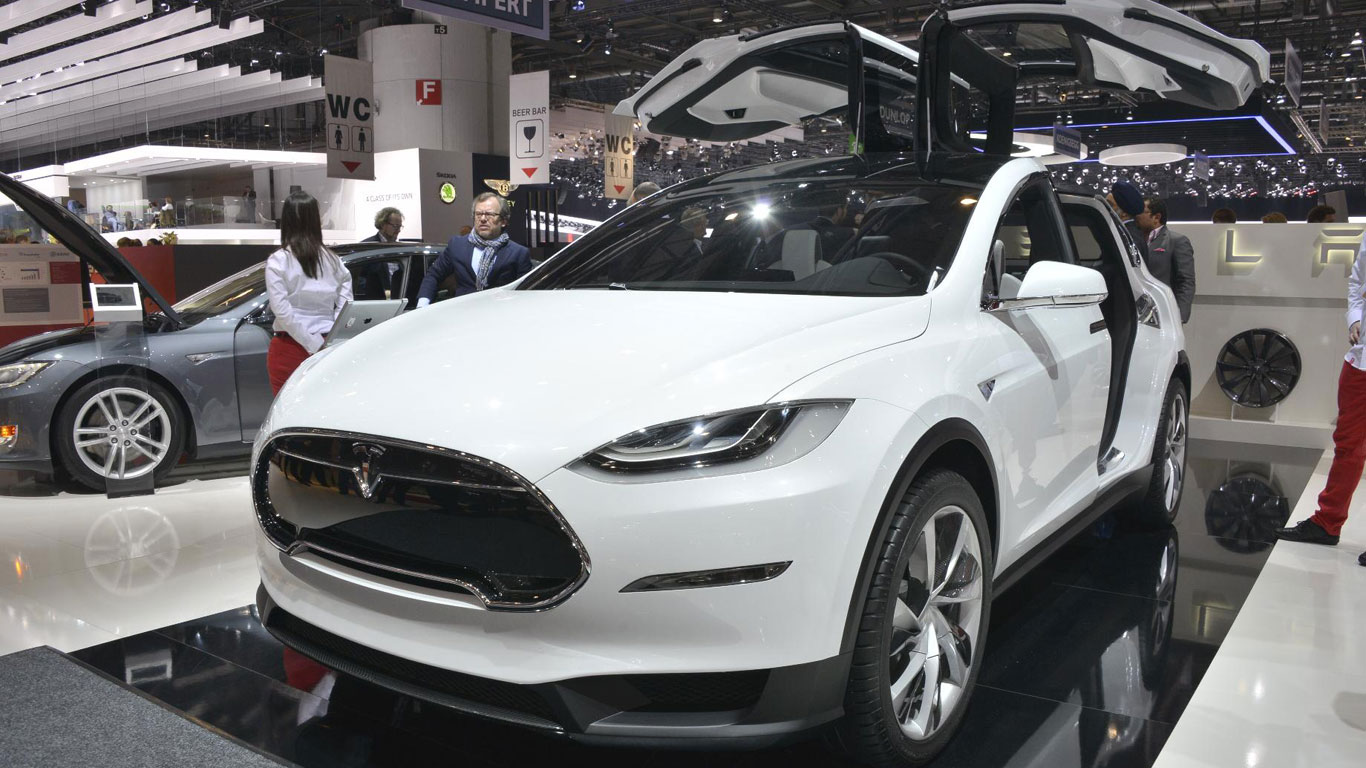
Easter eggs and theatre
© NewspressAlways keen to divert attention away from production and financial matters, Tesla has incorporated many so-called ‘Easter eggs’ in its models. These include the Lotus Esprit from The Spy Who Loved Me on the suspension menu, a Mario Kart setting for Autopilot, a door and light display for the Model X, and the surface of Mars on the map display. More seriously, in February 2017, Tesla Motors officially changed its name to Tesla Inc, marking a symbolic shift for the company.
-
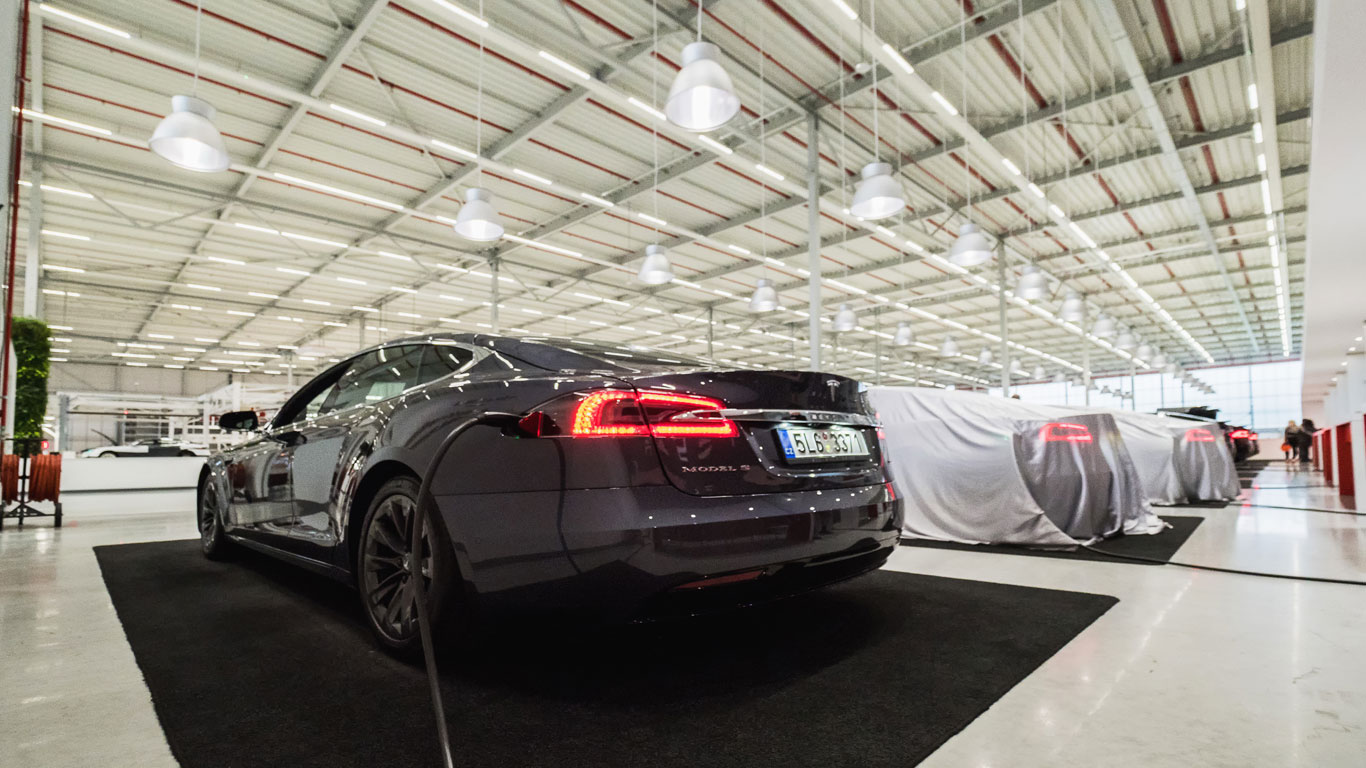
Global production
© ShutterstockTesla began manufacturing in Portugal and Taiwan in 2017, which followed the opening of an assembly plant in the Netherlands in 2013. The Tilburg factory serves as the final assembly and distribution point for vehicles sold in Europe, with Bryan Batista, European sales director, commenting: “It’s very exciting to see our cars arriving in Europe and being welcomed by their proud owners here in Tilburg. This location is pivotal to Tesla’s European operations, which are expanding rapidly over the coming months with openings of around 15 new stores and service centres.”
-
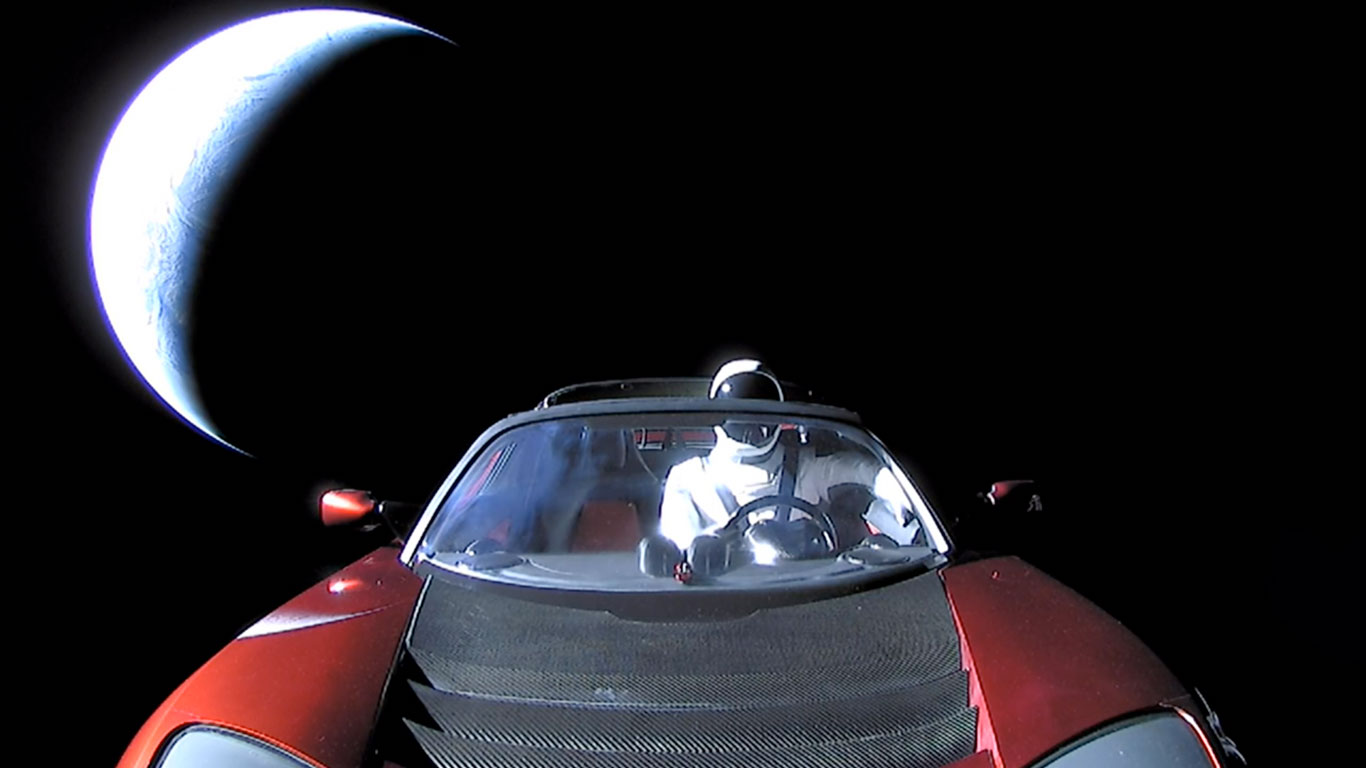
Spaceman
© SpaceX – WikipediaIn February 2018, Elon Musk sent a Tesla Roadster into space, claiming: “It’s kind of silly and fun, but silly and fun things are important.” The Roadster was placed on the nose cone of the Falcon Heavy, the most powerful rocket on earth, with the stereo programmed to play David Bowie’s Space Oddity on repeat.
-
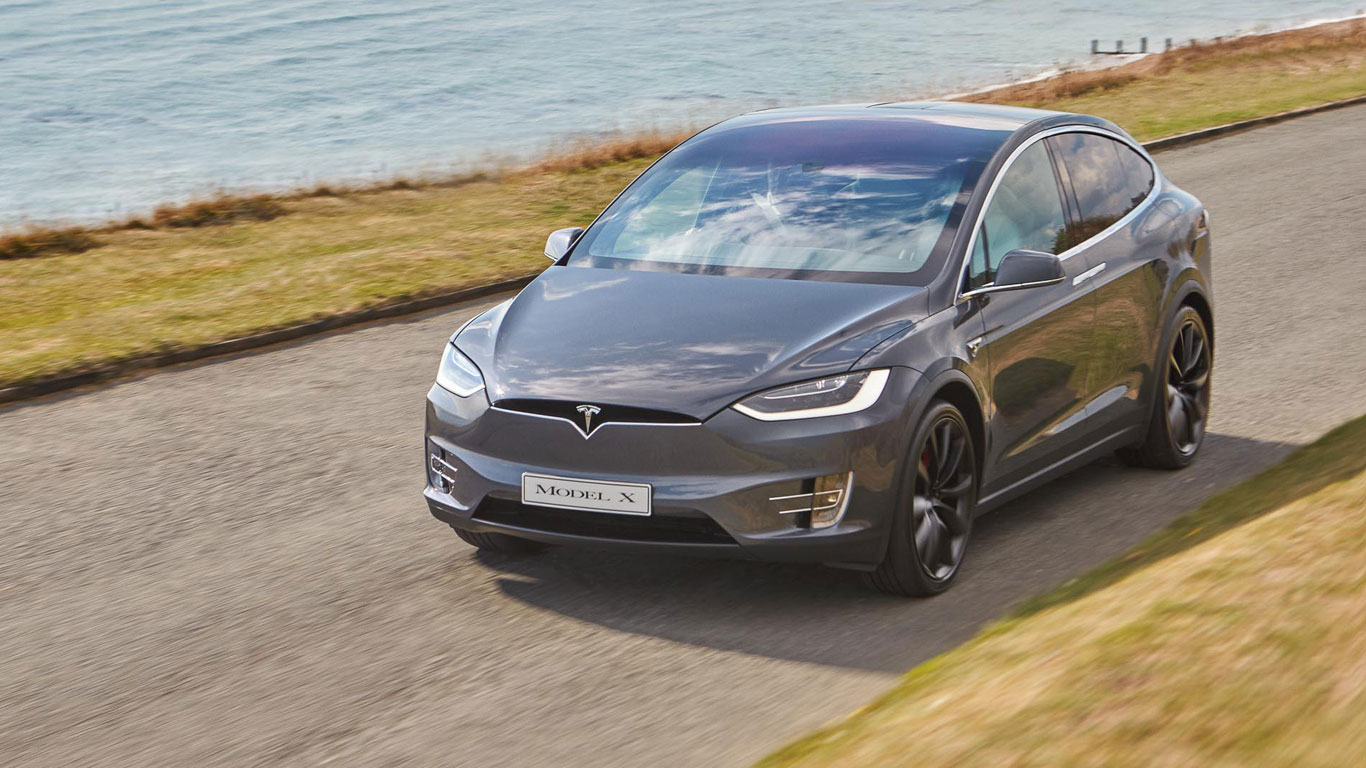
Model X accident
© TeslaA fatal crash involving a Model X hit the headlines in March 2018 after it was revealed that Autopilot was engaged at the time of the accident. “The driver’s hands were not detected on the wheel for six seconds prior to the collision,” said a company statement. In 2016, a Model S driver was killed in Florida when a driver failed to spot a lorry crossing its path. A preliminary investigation into the Model X crash revealed that the vehicle increased its speed from 62mph to 70.8mph in the three seconds before the collision. Tesla is keen to stress that Autopilot is designed to be used with both hands on the wheel.
-
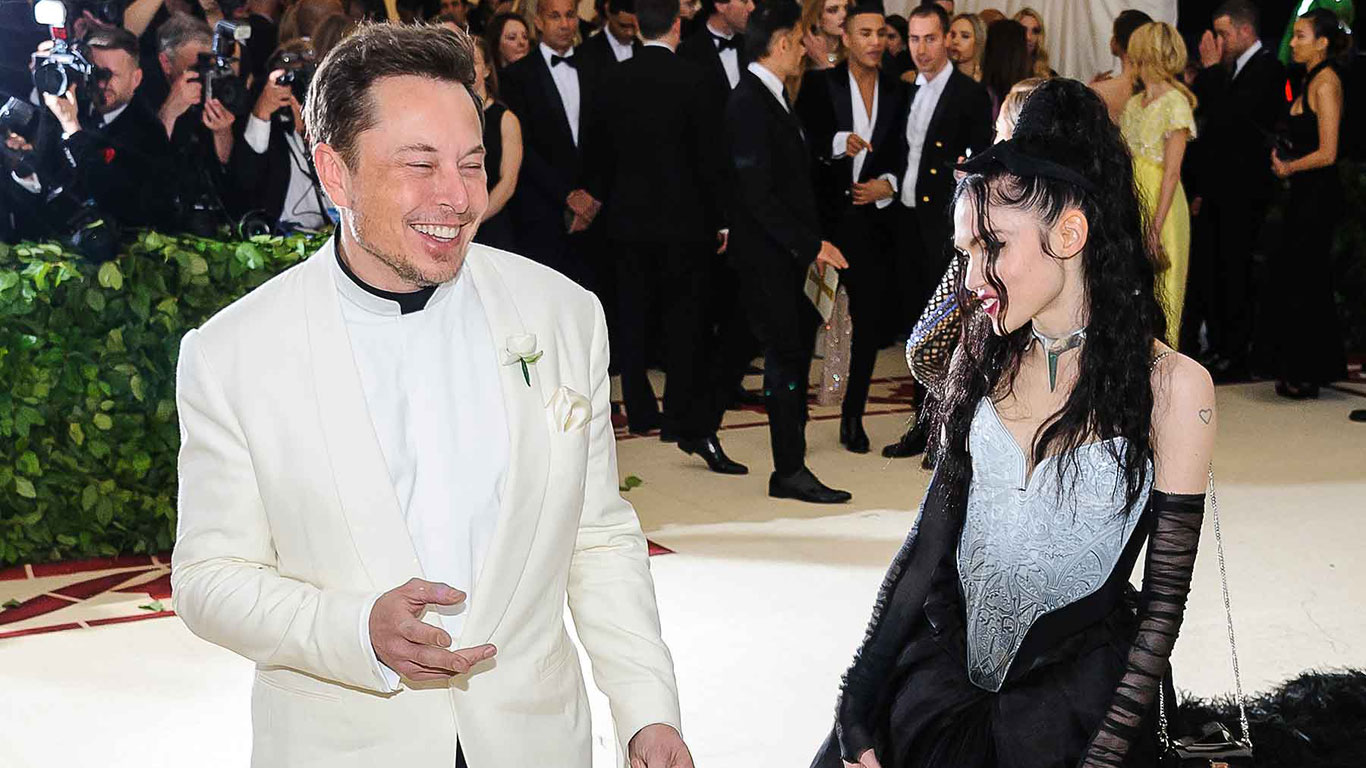
Share slumps and losses
© ShutterstockIn April 2018, shares rose by 6.9 percent when Musk announced that Tesla would not need to raise more capital in 2018, only for the value to slump by 8.6 percent following a bizarre and heated conference call with a group of analysts. He told one analyst he was asking “boring bonehead questions” that were “not cool.”
-
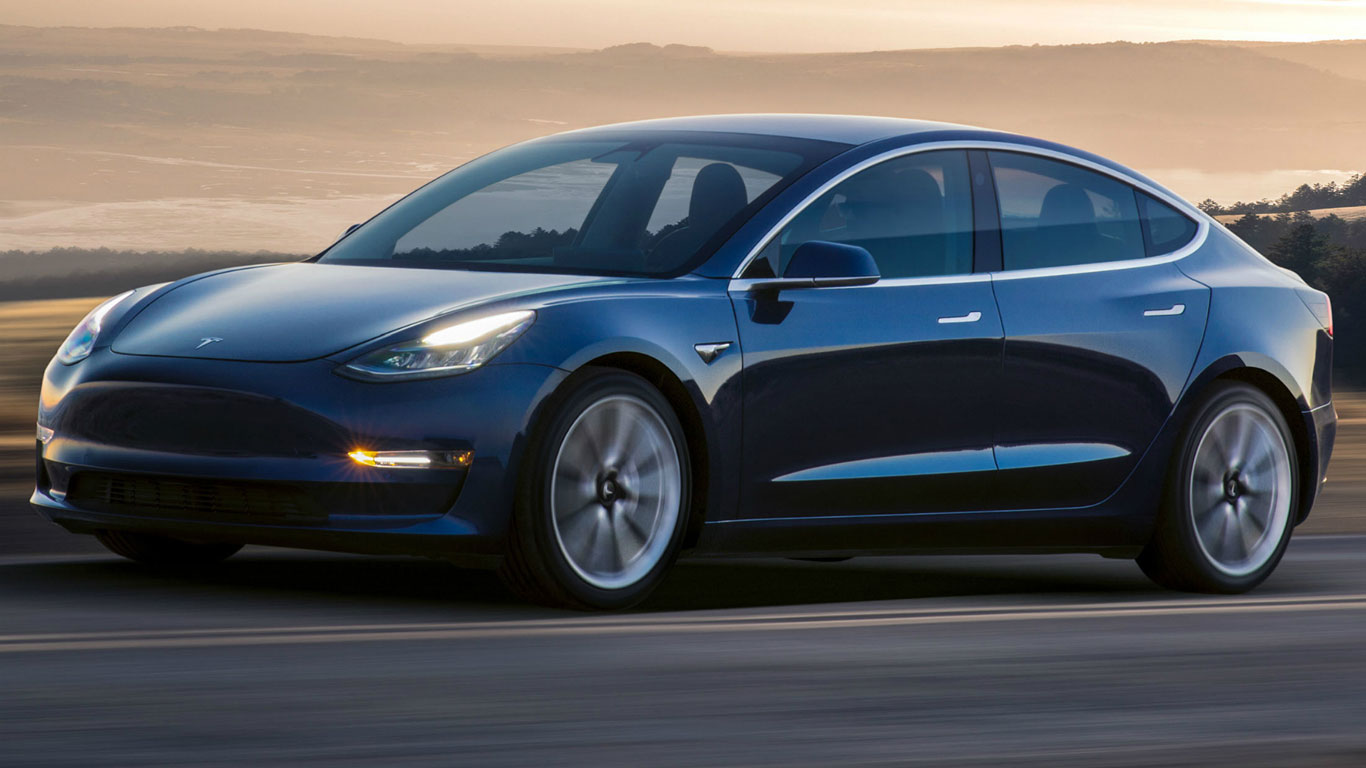
5000 Model 3s
© TeslaIn July 2018, Tesla announced that it had built 5,000 Model 3s during the last week of the month, only to reveal its biggest ever loss in August. However, the value of Tesla shares actually increased. In 2020, the Model 3 capitalised on the growing demand for electric cars and the slump in new car registrations to become a regular in the UK’s monthly best-selling car charts.
-
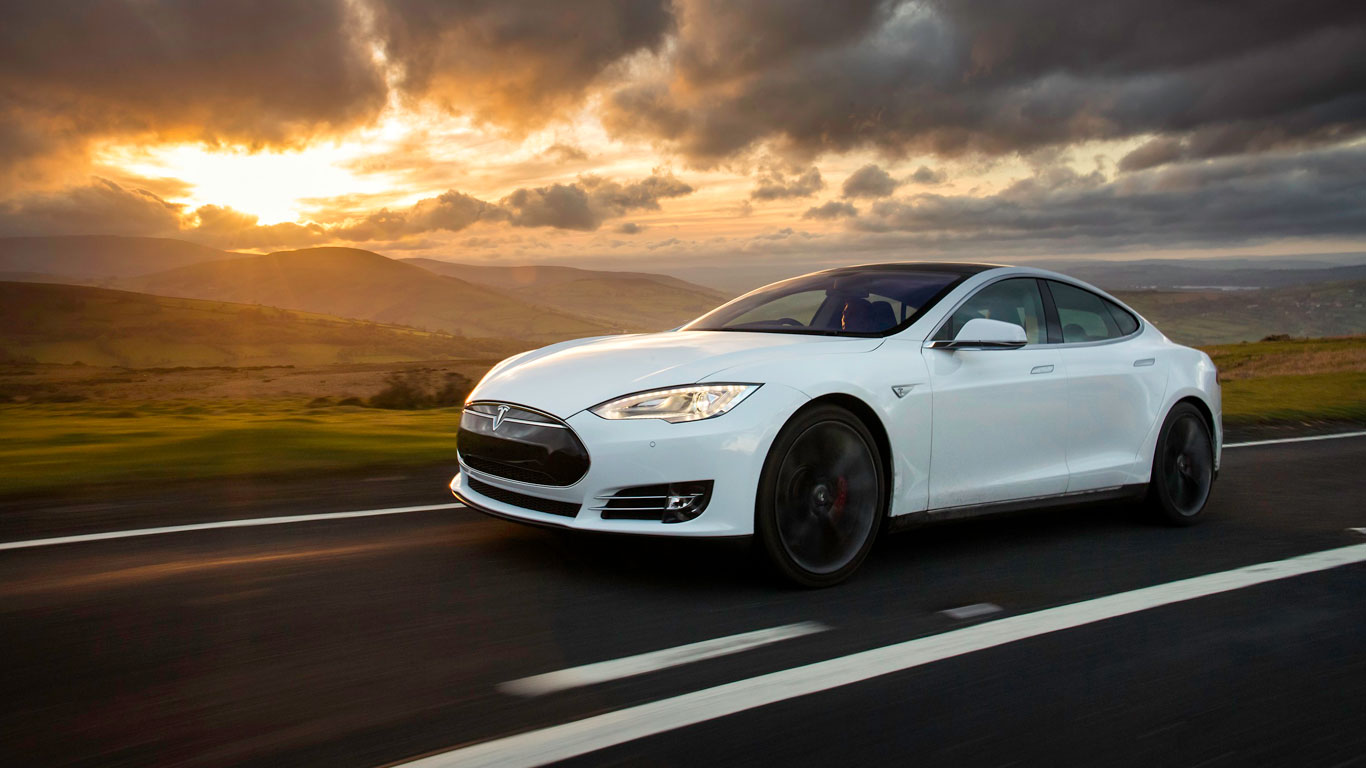
Tesla to go private
© TeslaIn August 2018, Elon Musk announced that he was considering taking Tesla private, although the company’s board of directors subsequently said that they had yet to receive a formal proposal. In the latest update, Musk said: “I’m considering taking Tesla private because I believe it could be good for our shareholders, enable Tesla to operate at its best, and advance our mission of accelerating the transition to sustainable energy.” In September 2018, the US Securities and Exchange Commission charged Musk with securities fraud, saying his tweets were ‘false and misleading’.
-
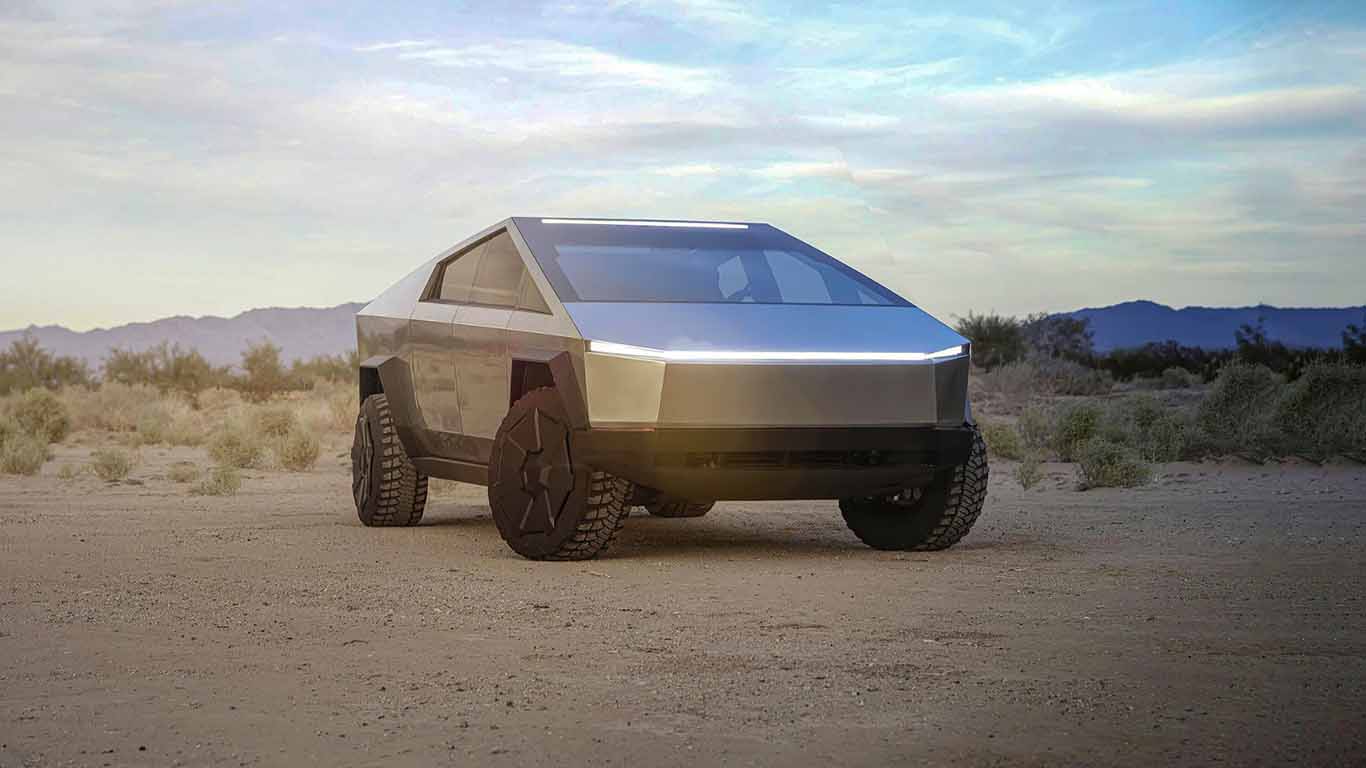
Cybertruck to kick butt
© ShutterstockMusk unveiled the Cybertruck in 2019. The electric pick-up will offer a claimed 500 miles of range when production starts – apparently in 2023. According to Elon Musk, the Cybertruck is “designed to have the utility of a truck and the performance of a sports car”. He’s also teased an off-road version with longer suspension travel designed to “kick butt in Baja”.
-
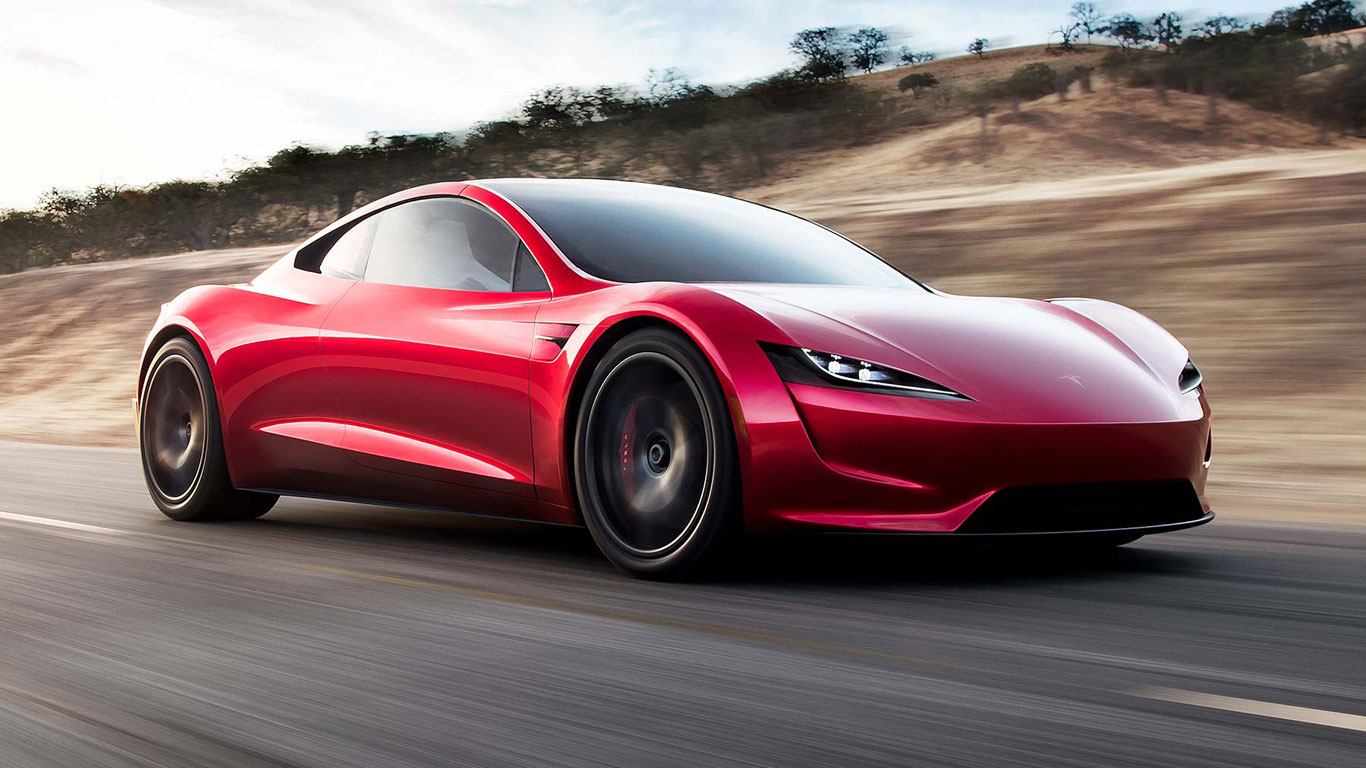
Roadster rides again
© TeslaThe new Tesla Roadster should have been with us by now, but production has been delayed. It represents Tesla going back to its 2003 roots, and is claimed to be the ‘quickest car in the world’. Potential rivals include the Lotus Evija and Pininfarina Battista: both electric hypercars with equally extreme performance.
-
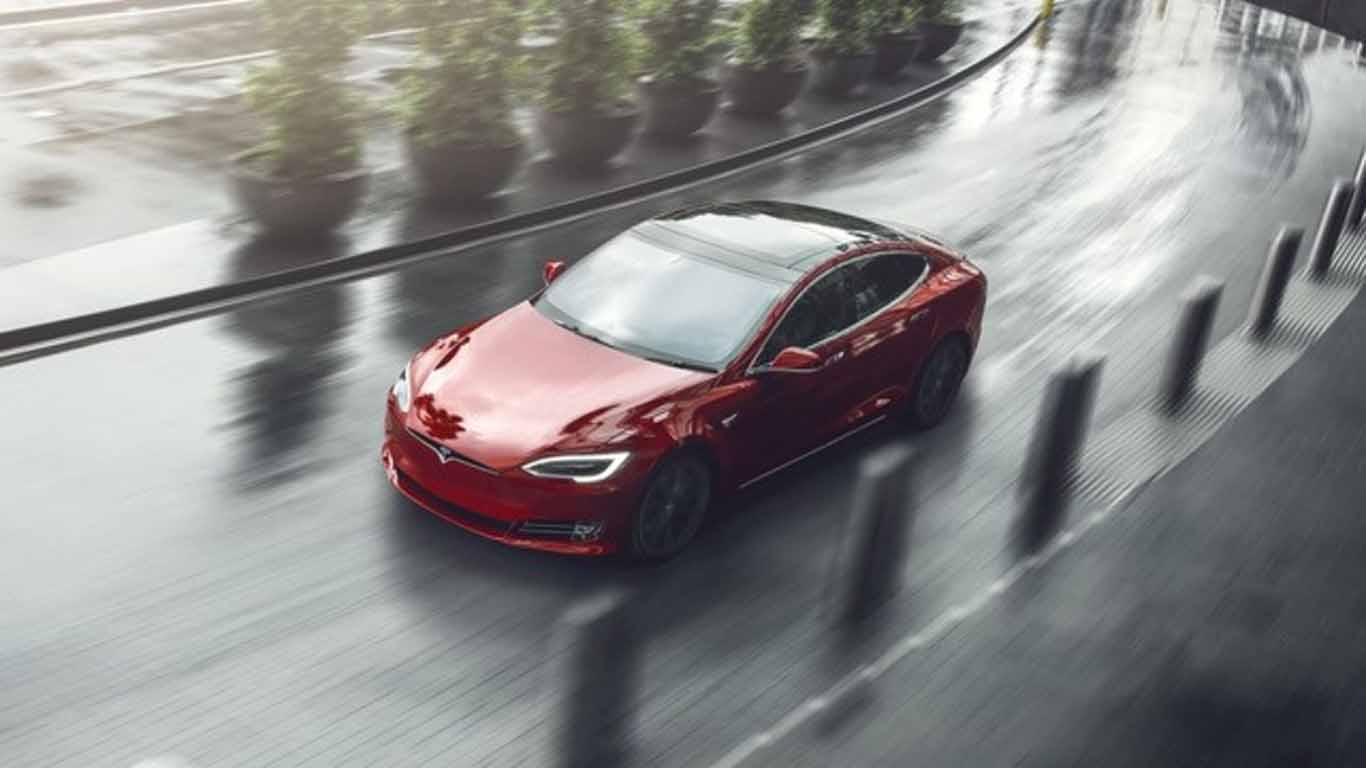
Tesla Model S Plaid
© TeslaFour years after Tesla launched the Ludicrous upgrade for the Model S, Plaid upped the game again. The figures are… ludicrous. Over 1,000hp. Zero to 60mph in less than two seconds. And a driving range of 520 miles. Then there’s the fact that it comes with a three-motor all-wheel-drive system. Still want that Porsche Taycan?
-
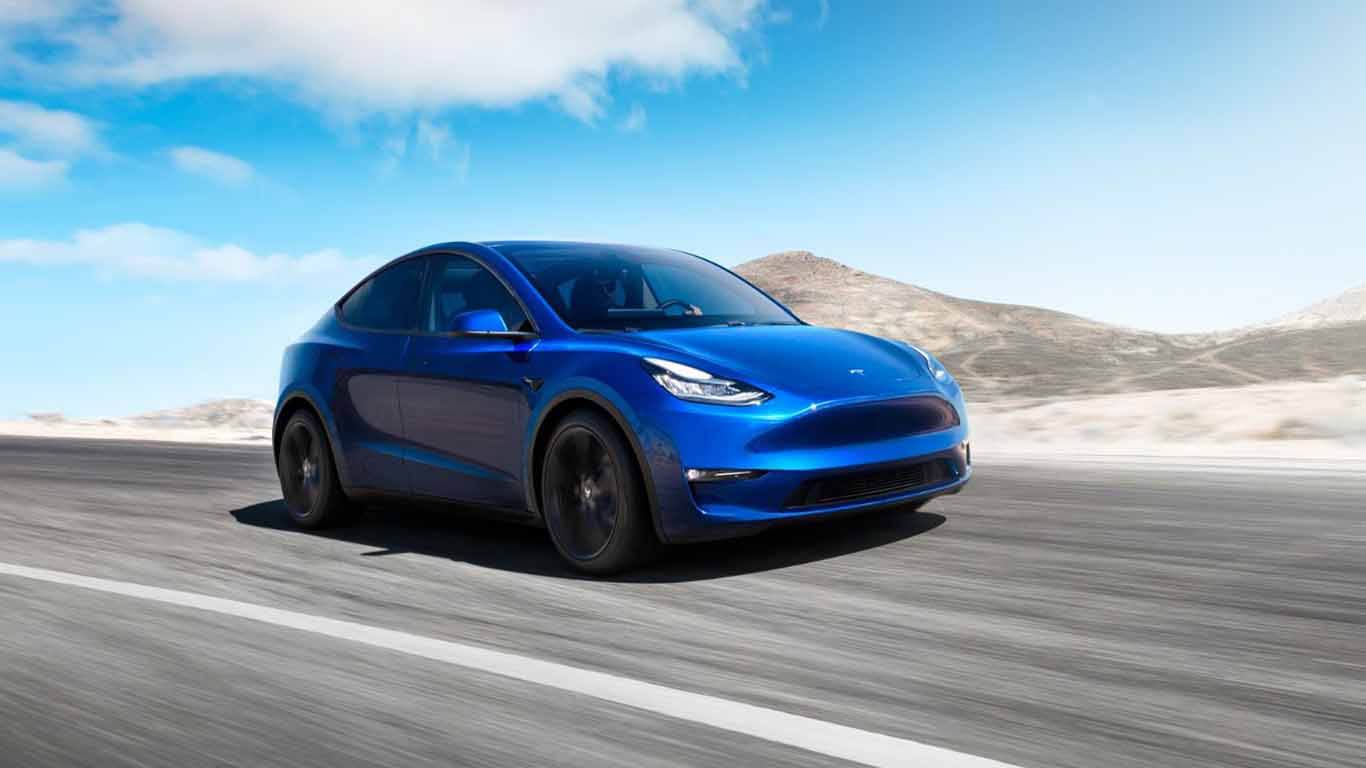
Tesla Model Y
© TeslaThe Tesla Model Y is finally on sale globally – and has already appeared in the best-sellers chart. It shares a platform and most of its interior with the Model 3, but there’s also a seven-seat version. This makes it a rival to the Model X, albeit without the fancy doors. In March 2020, a Model Y became the one-millionth car built by Tesla.
-
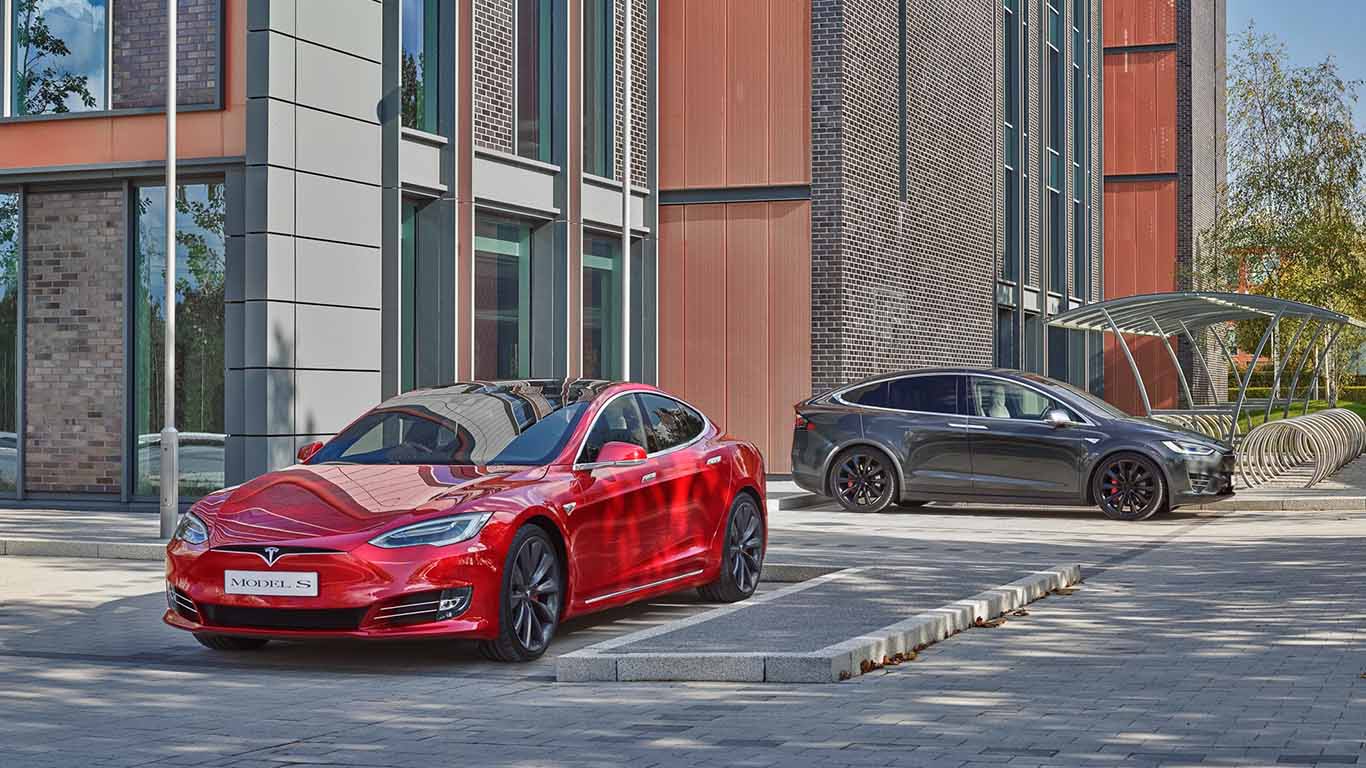
What next
© TeslaTesla has crammed enough events, achievements, controversies and tweets into its first 19 years to last other companies a lifetime. We haven’t mentioned the Gigafactories or the Tesla Semi. Or the ill-advised tweet following the rescue of the boys stuck in a flooded cave. Whatever happens, the next 19 years are going to be far from boring. Speaking of which, Musk founded The Boring Company in 2016. But that’s another story.